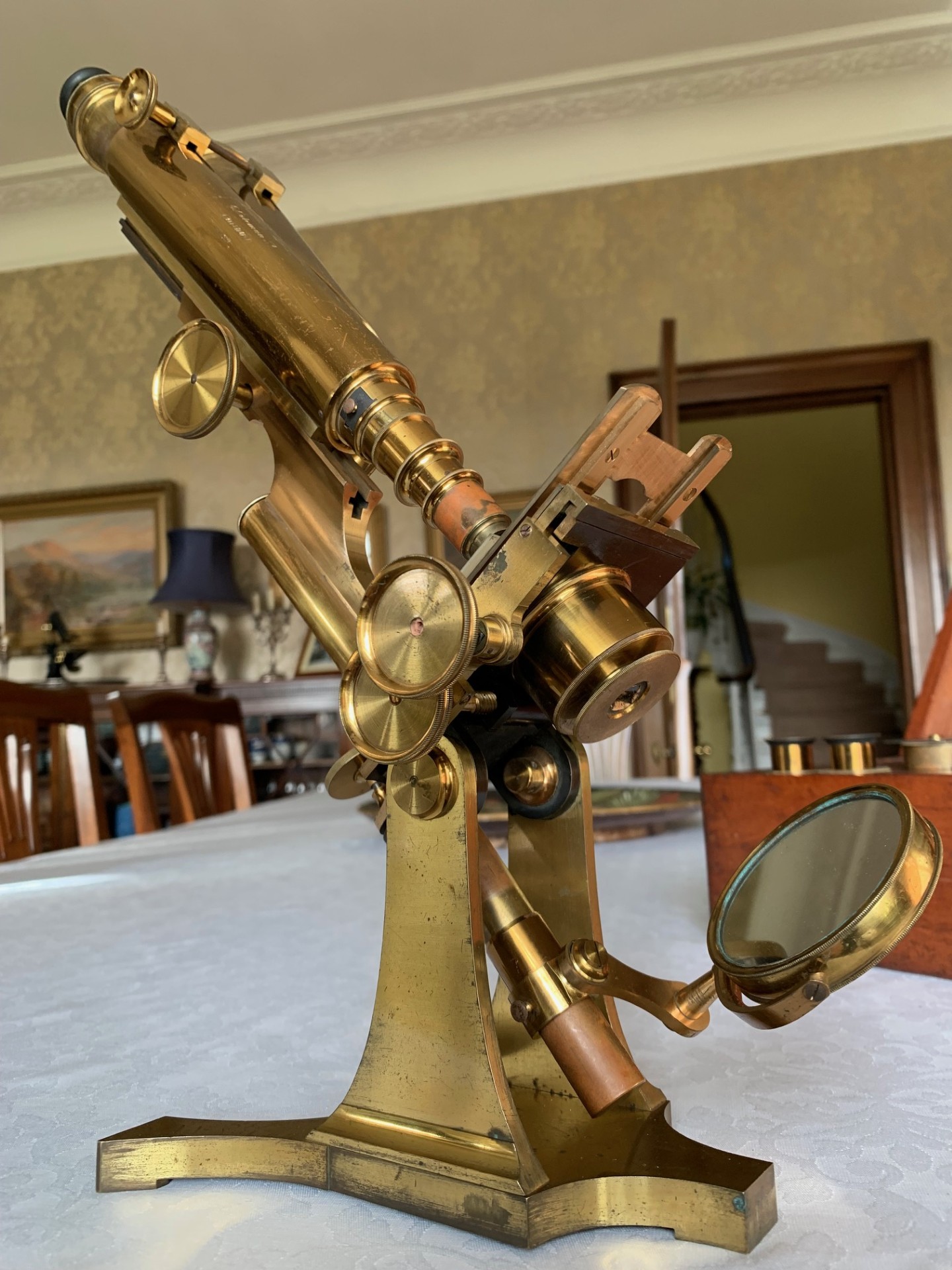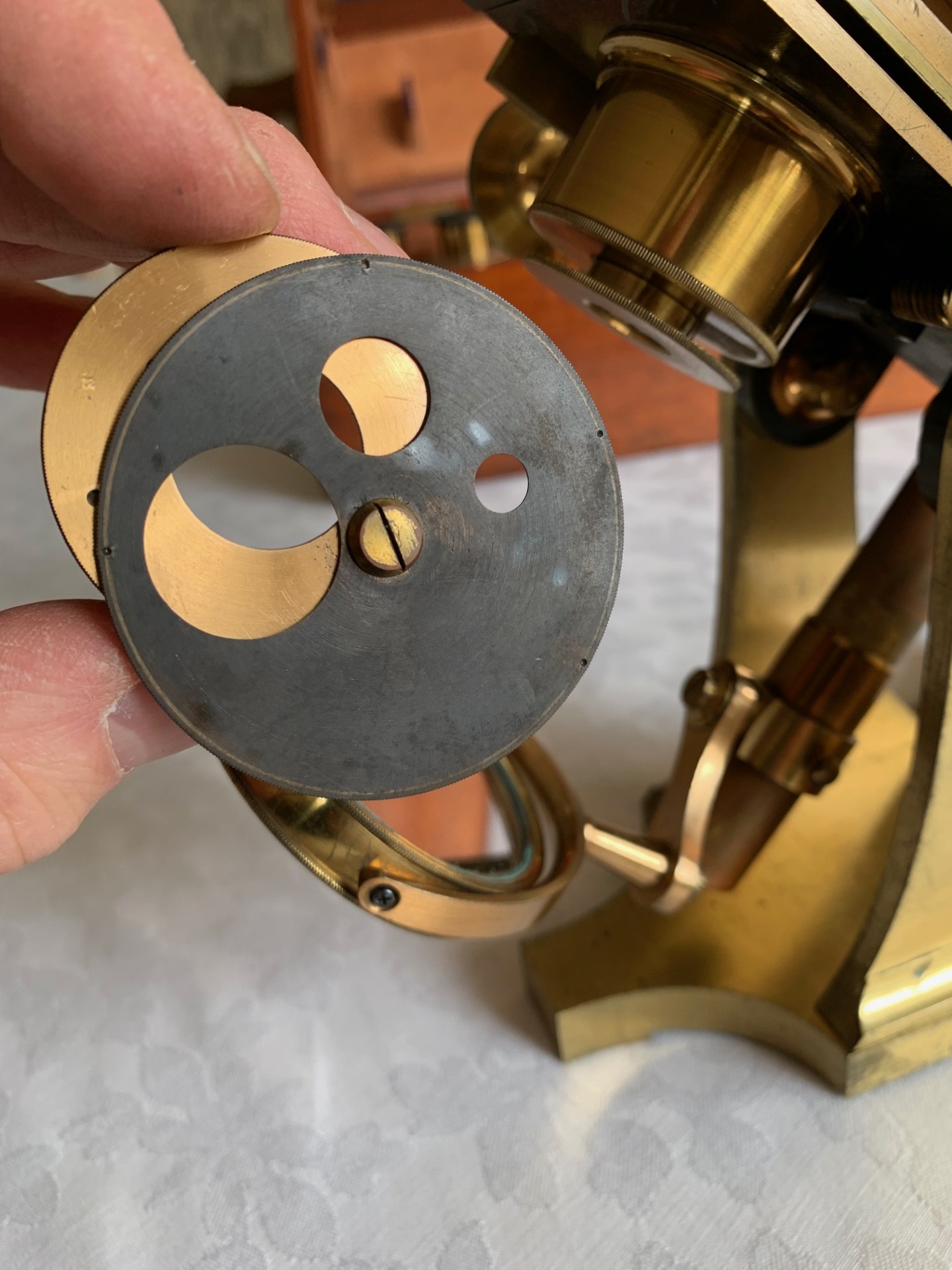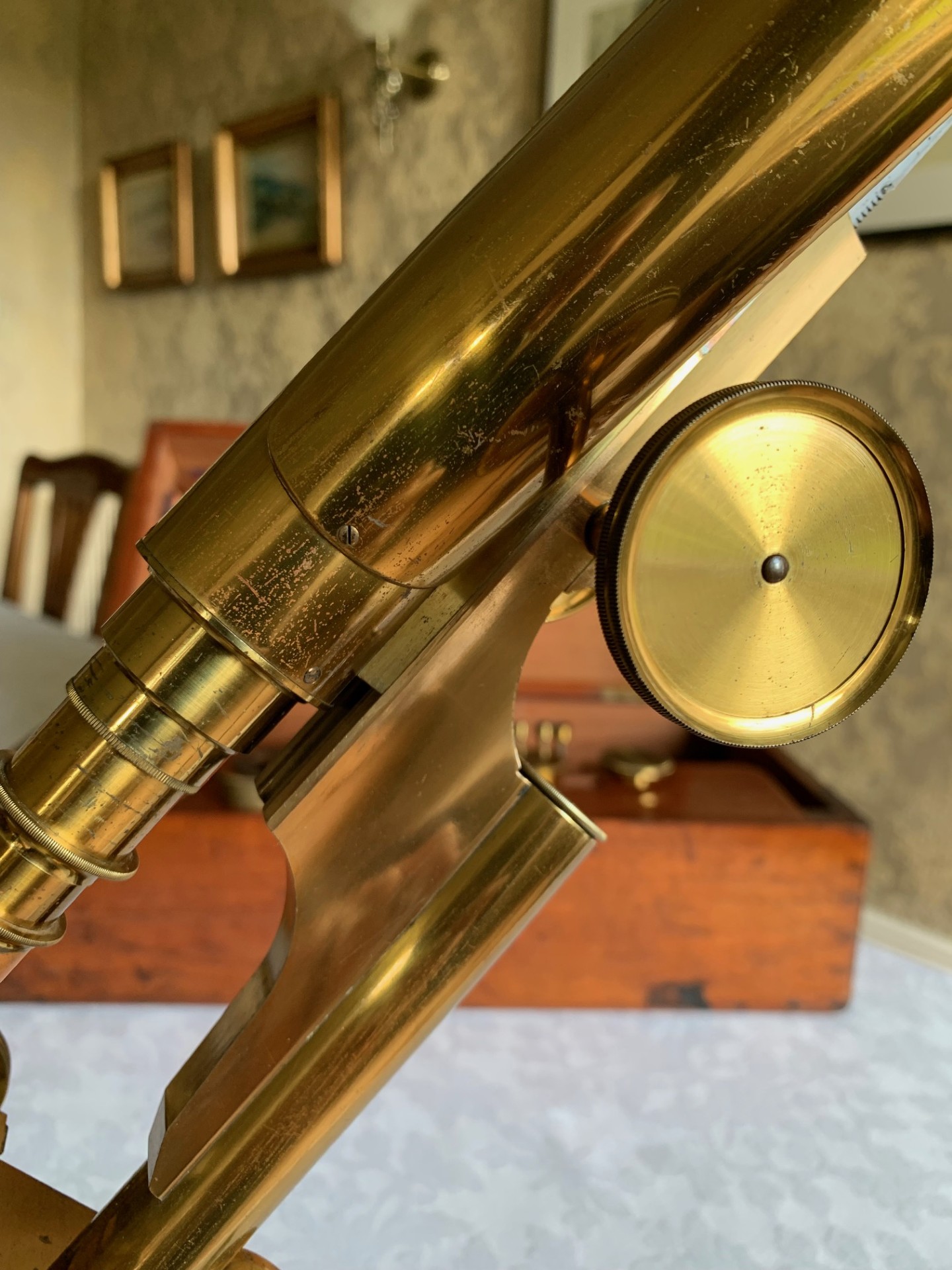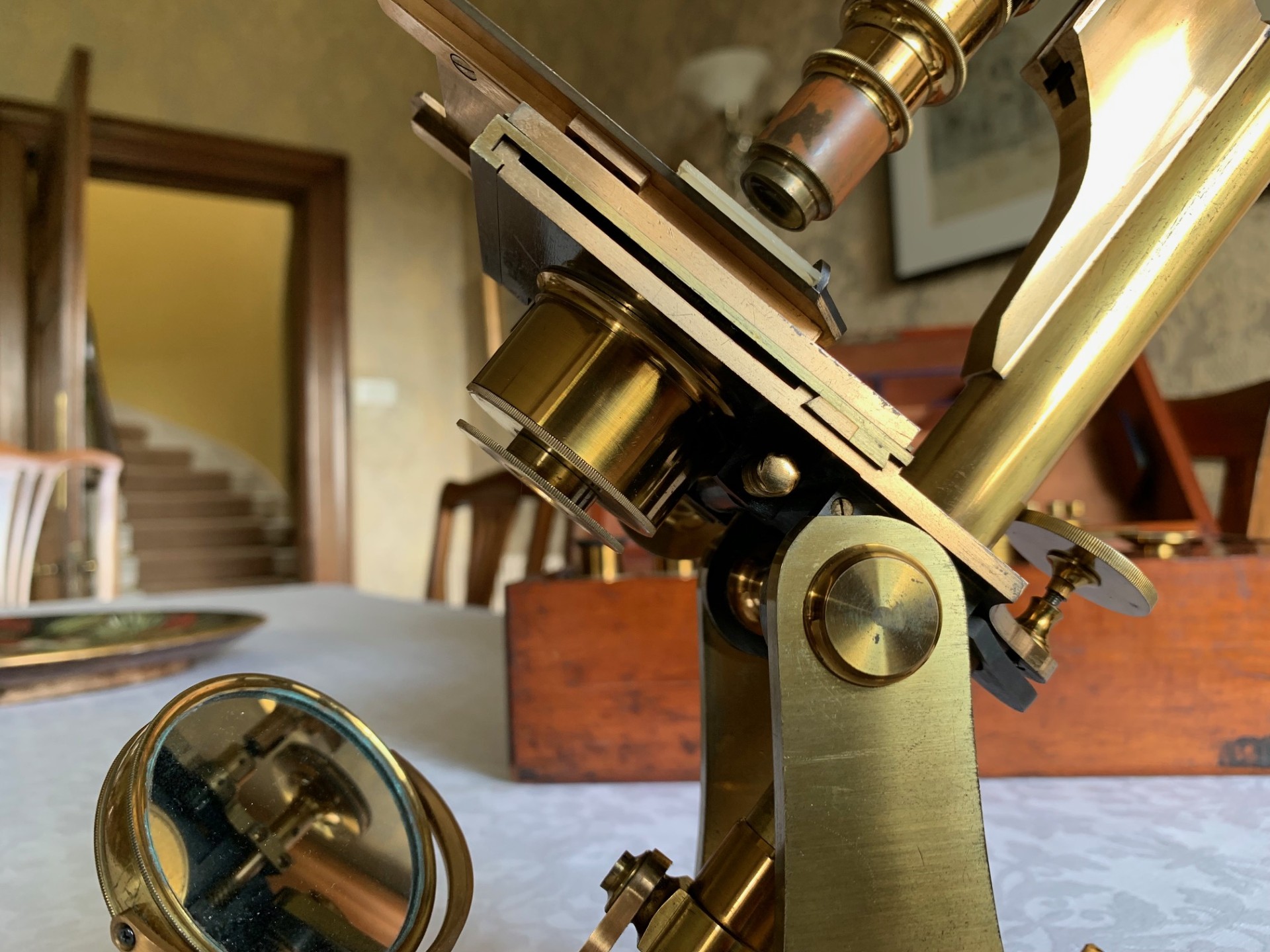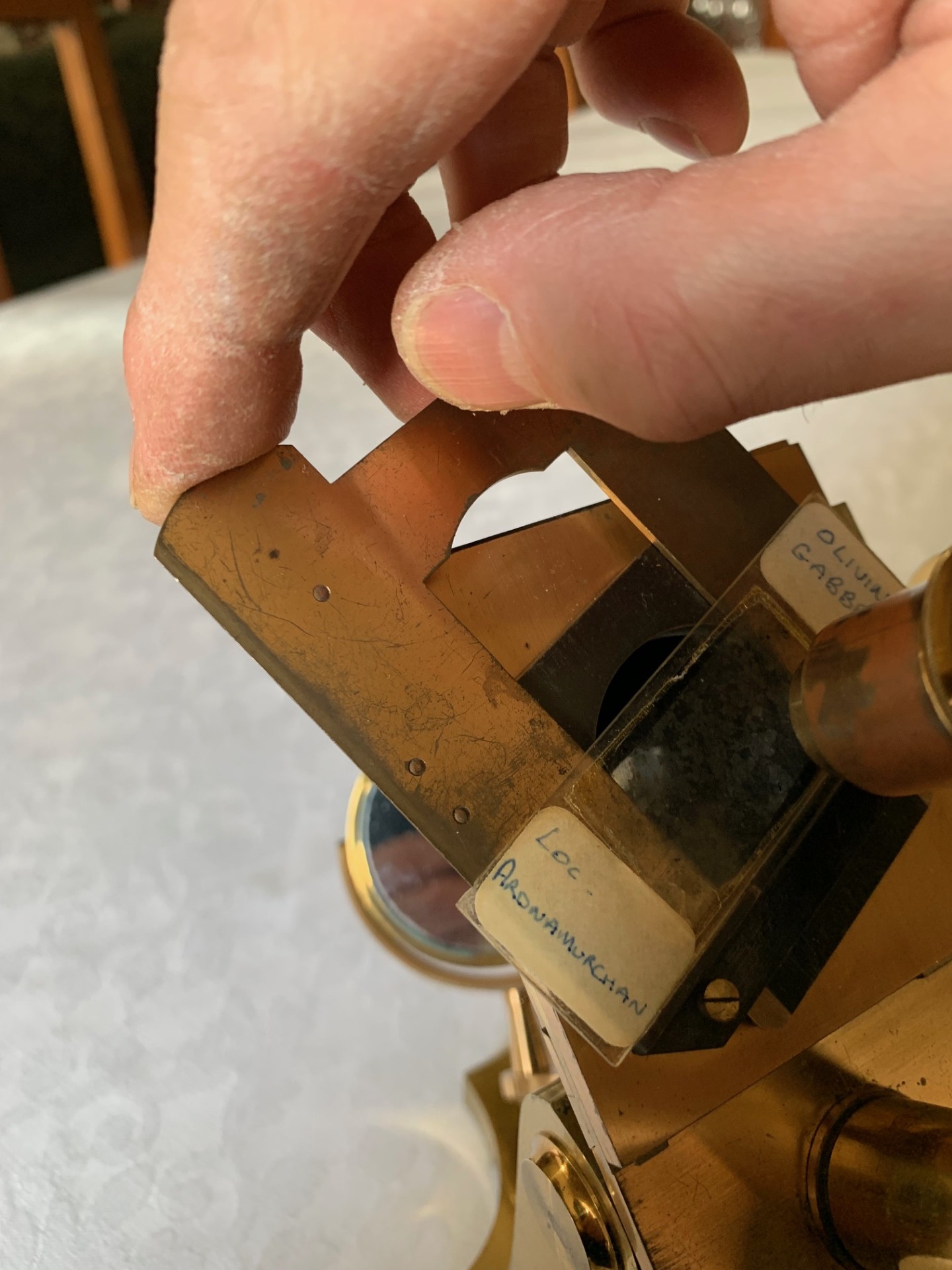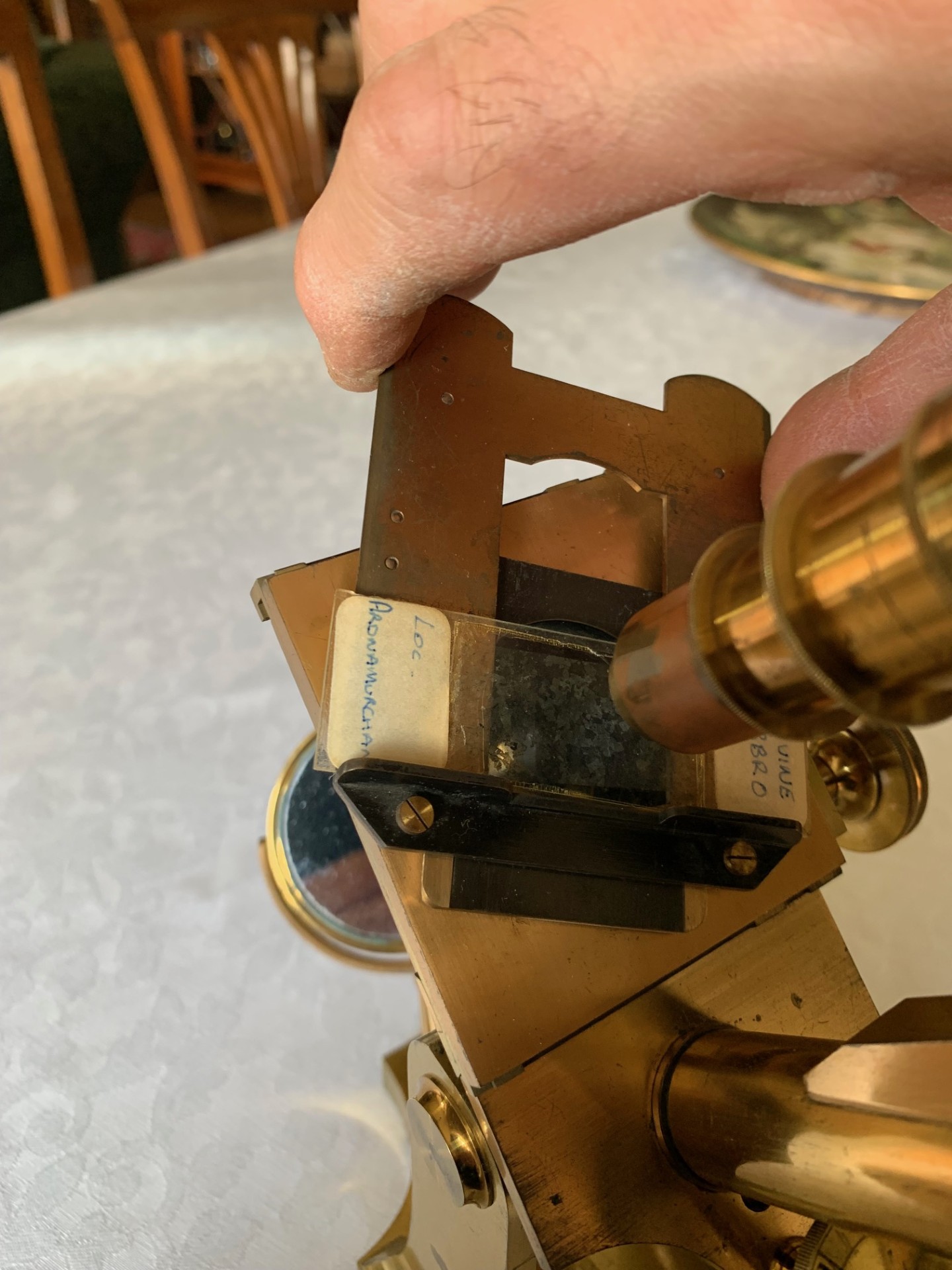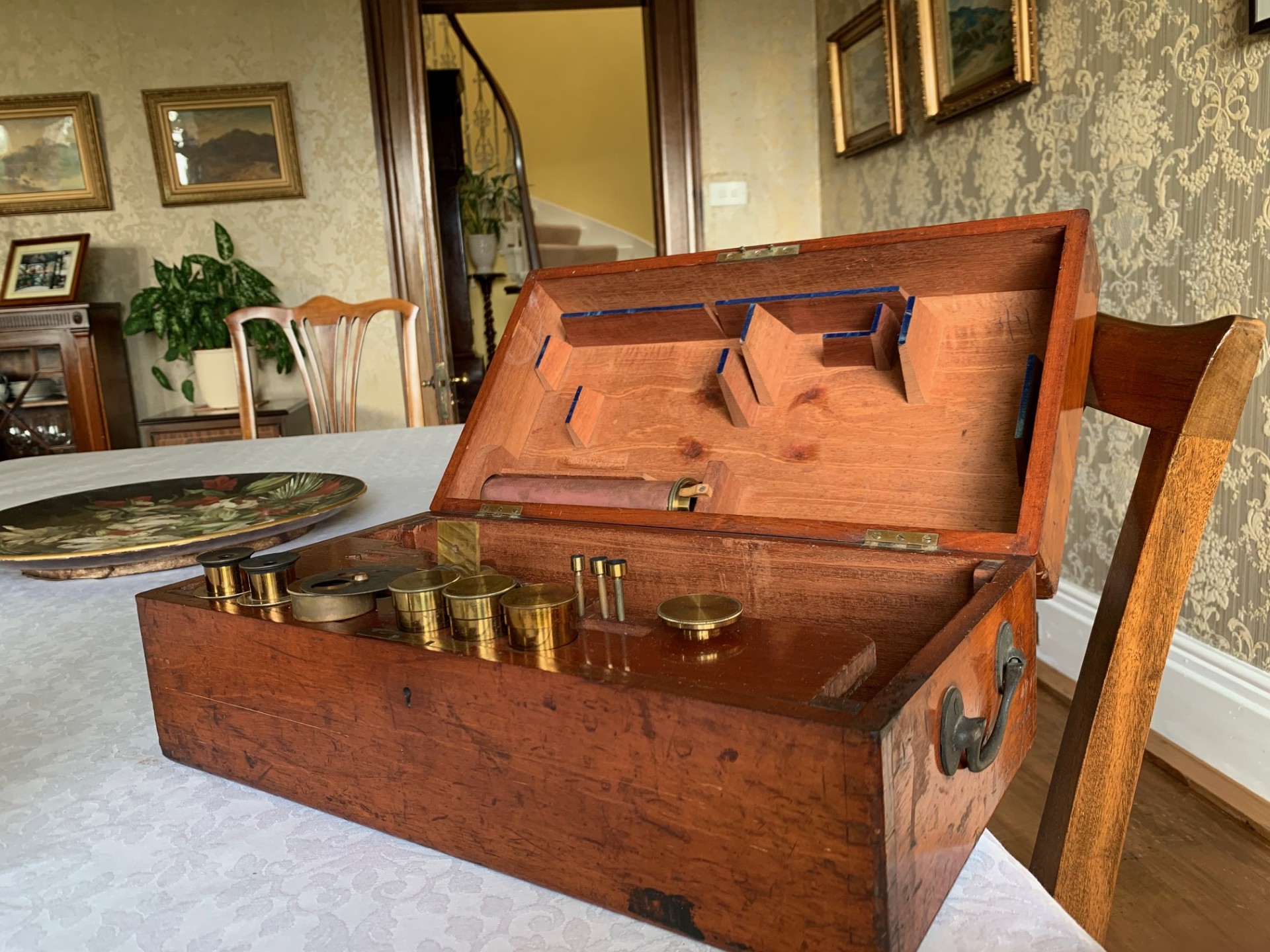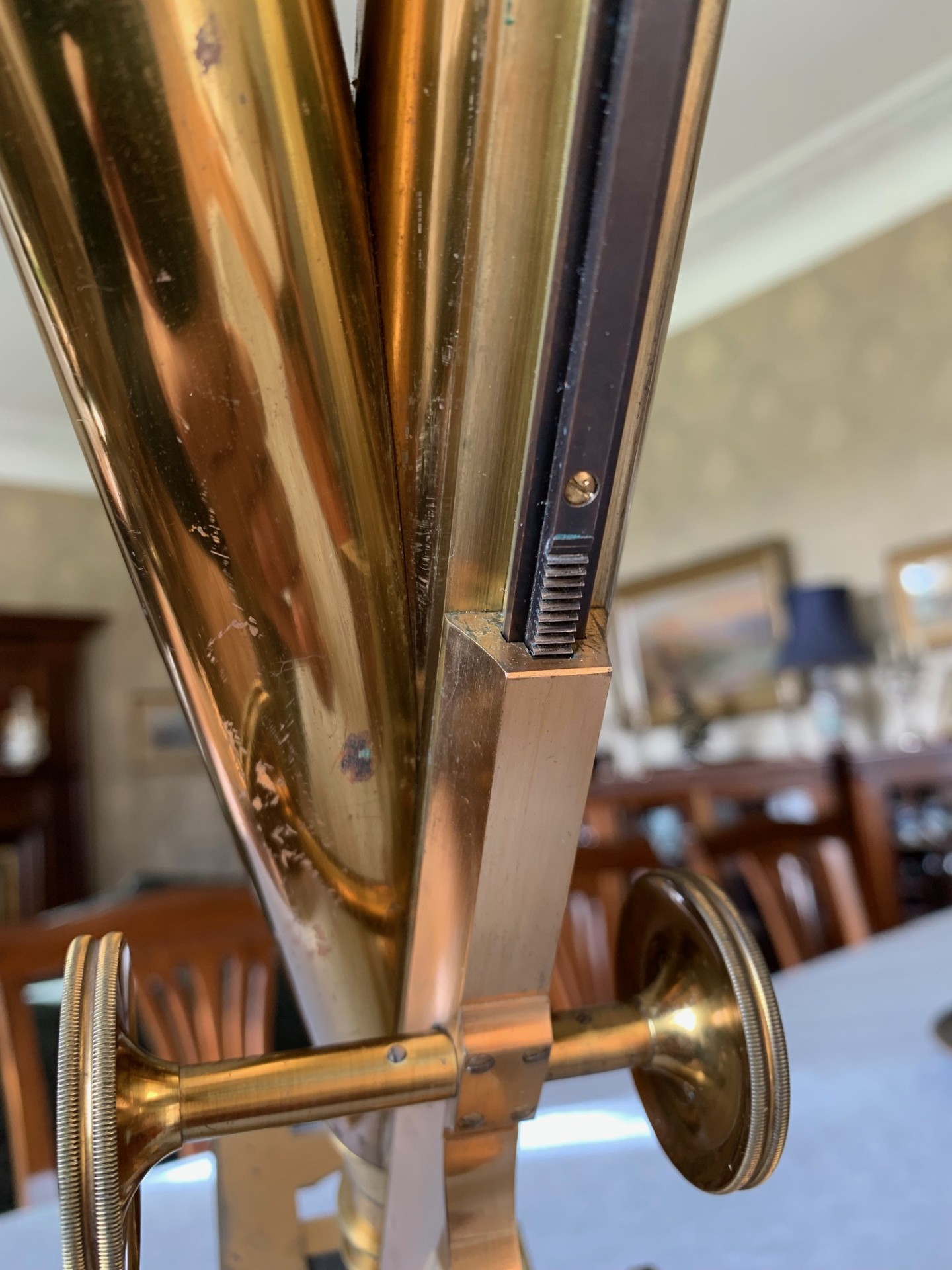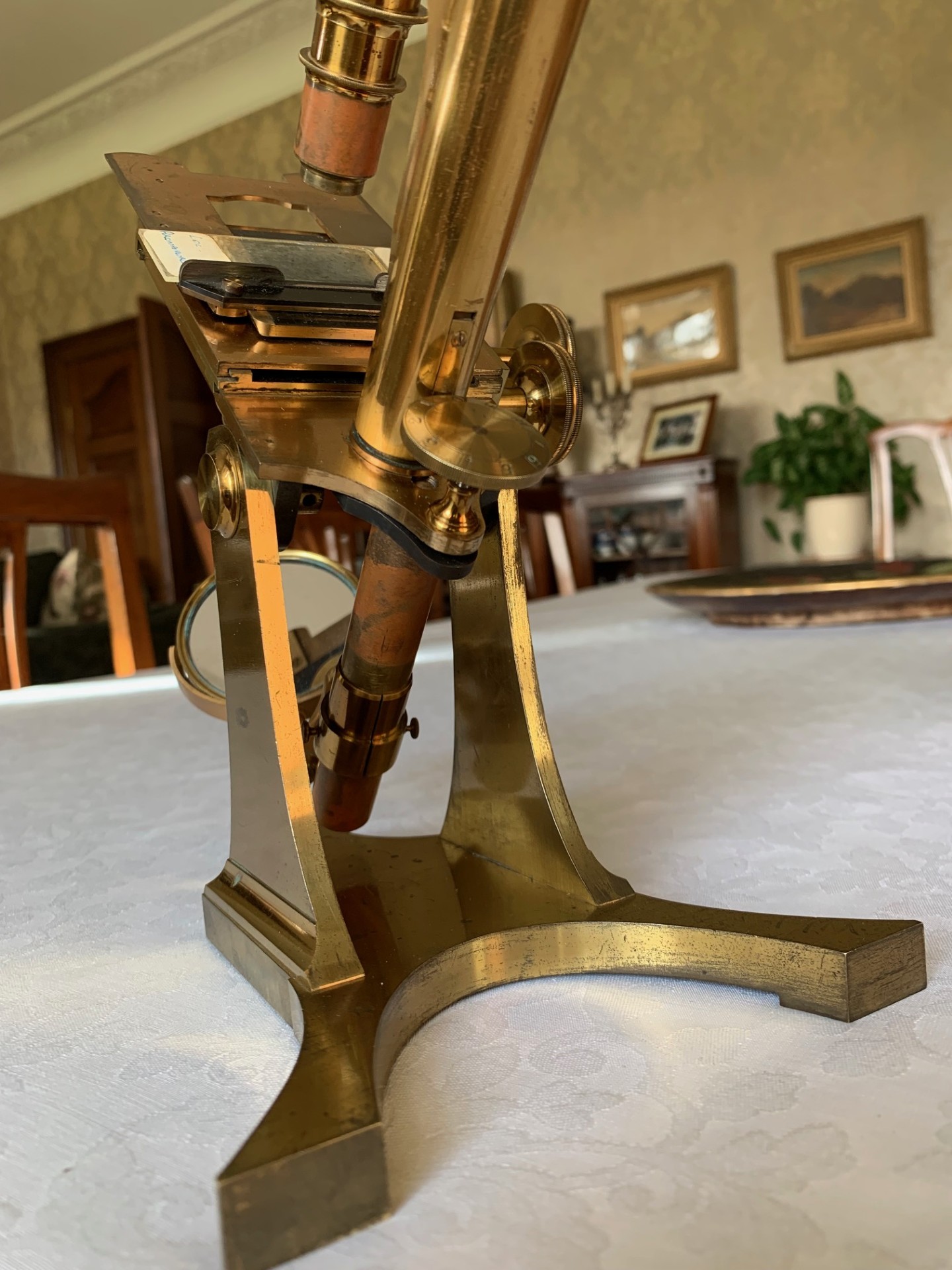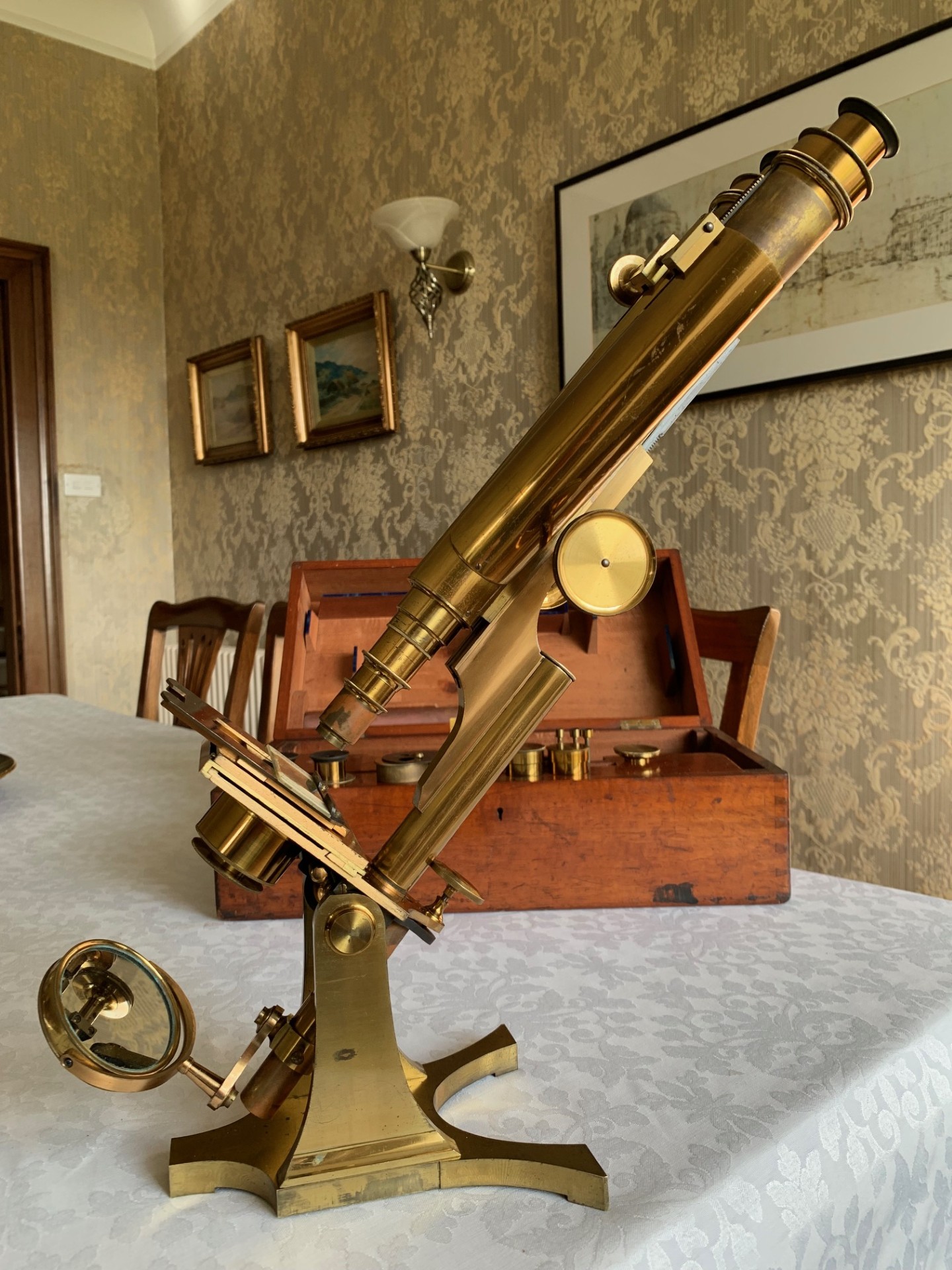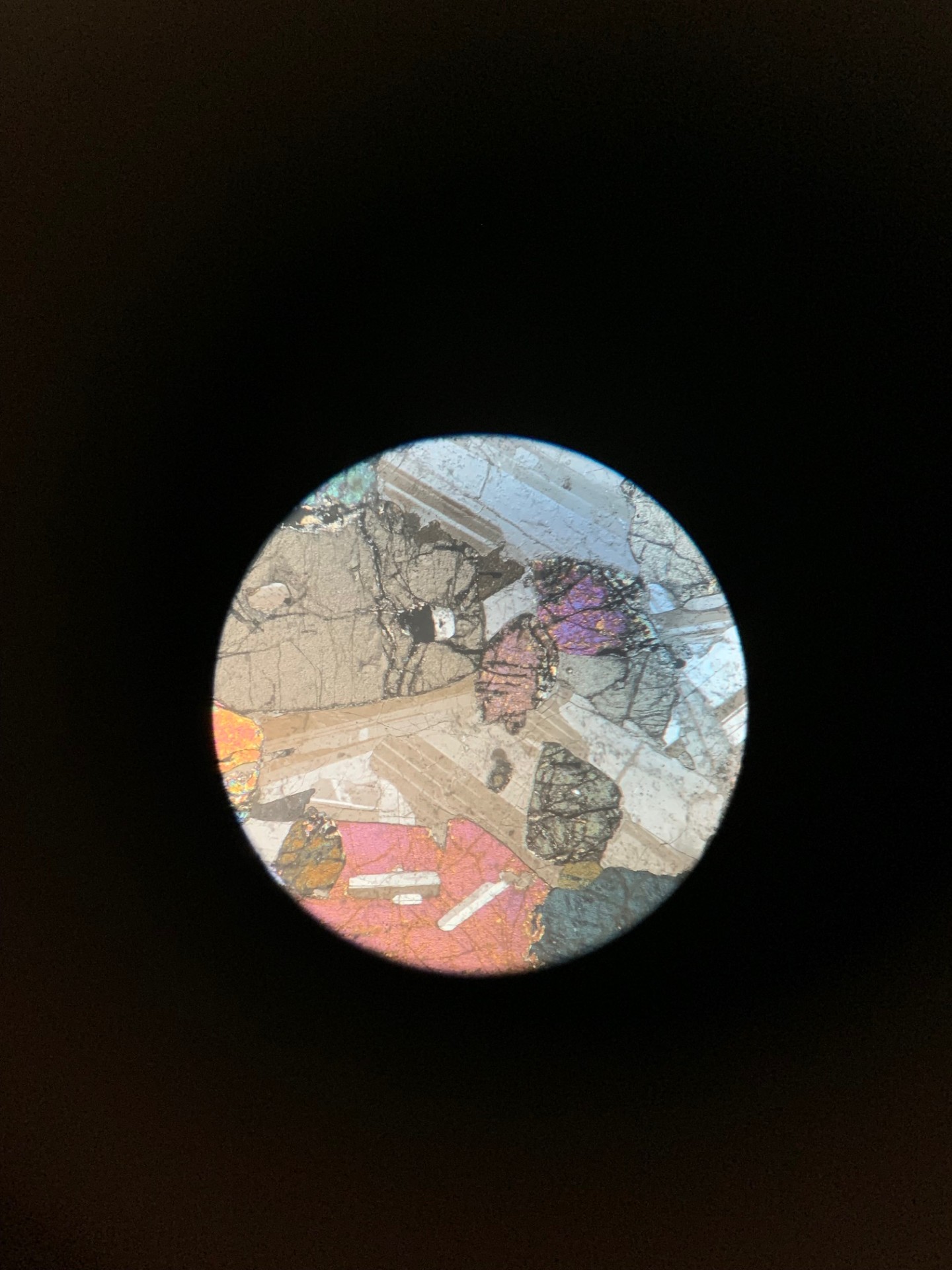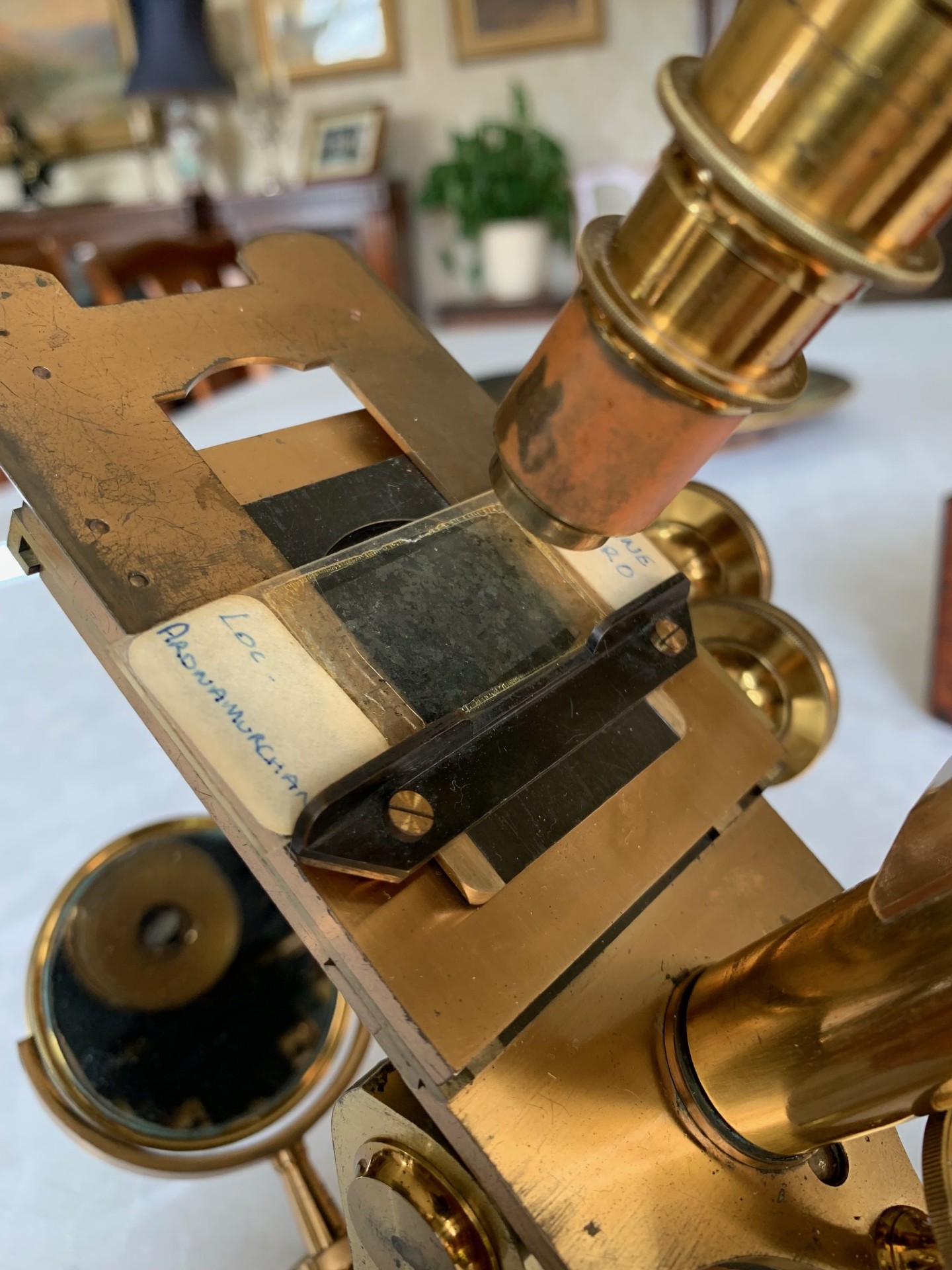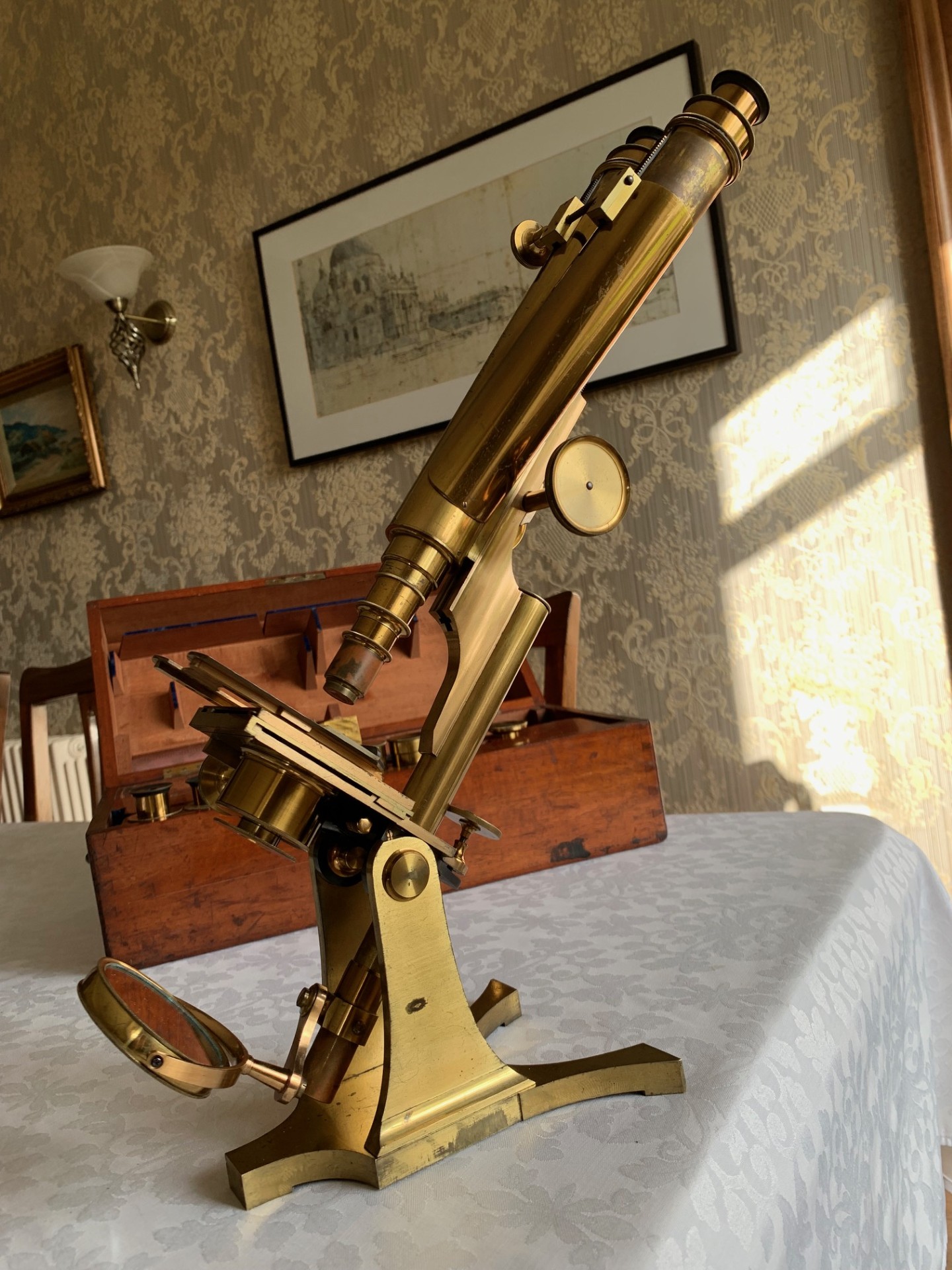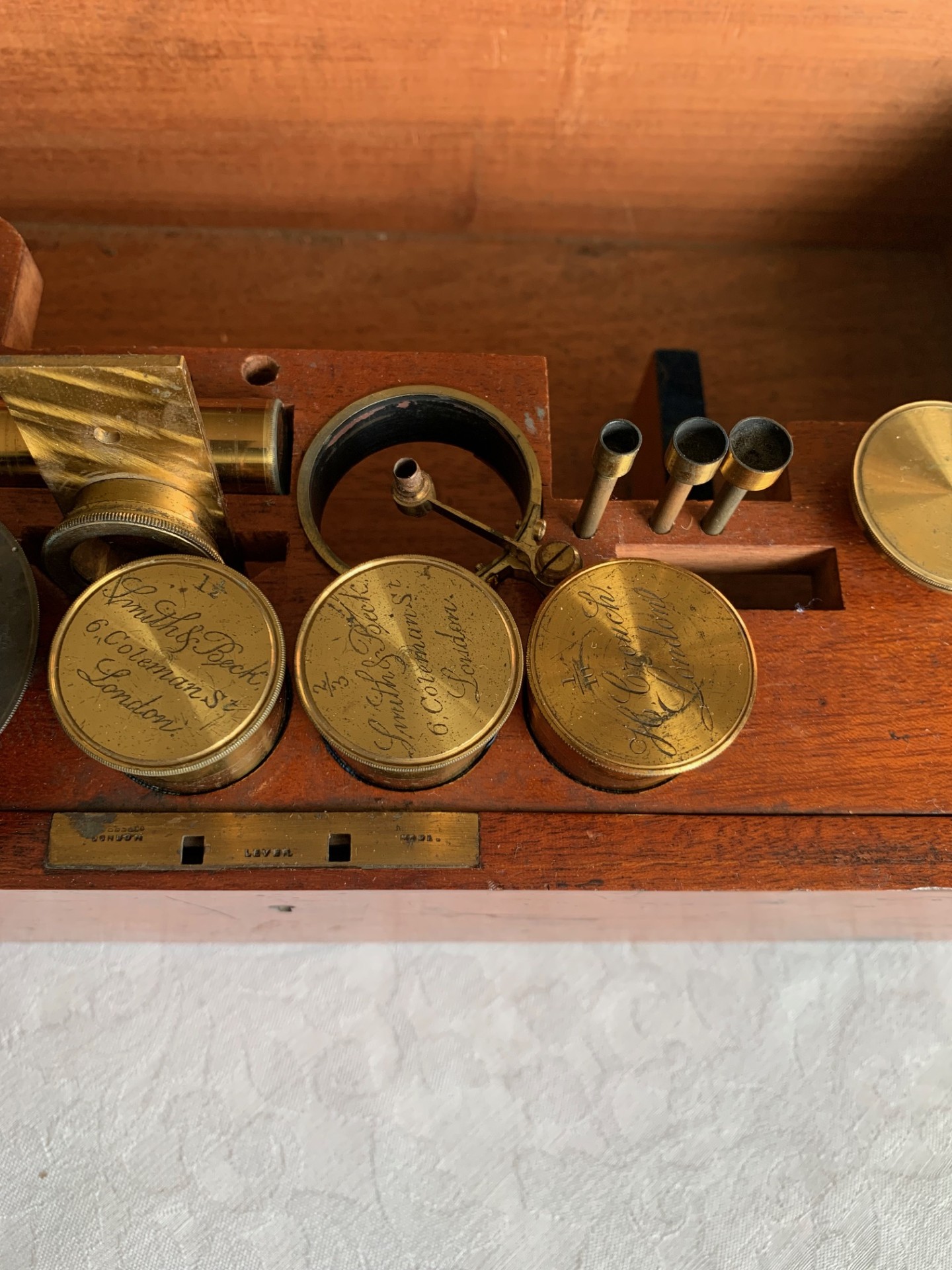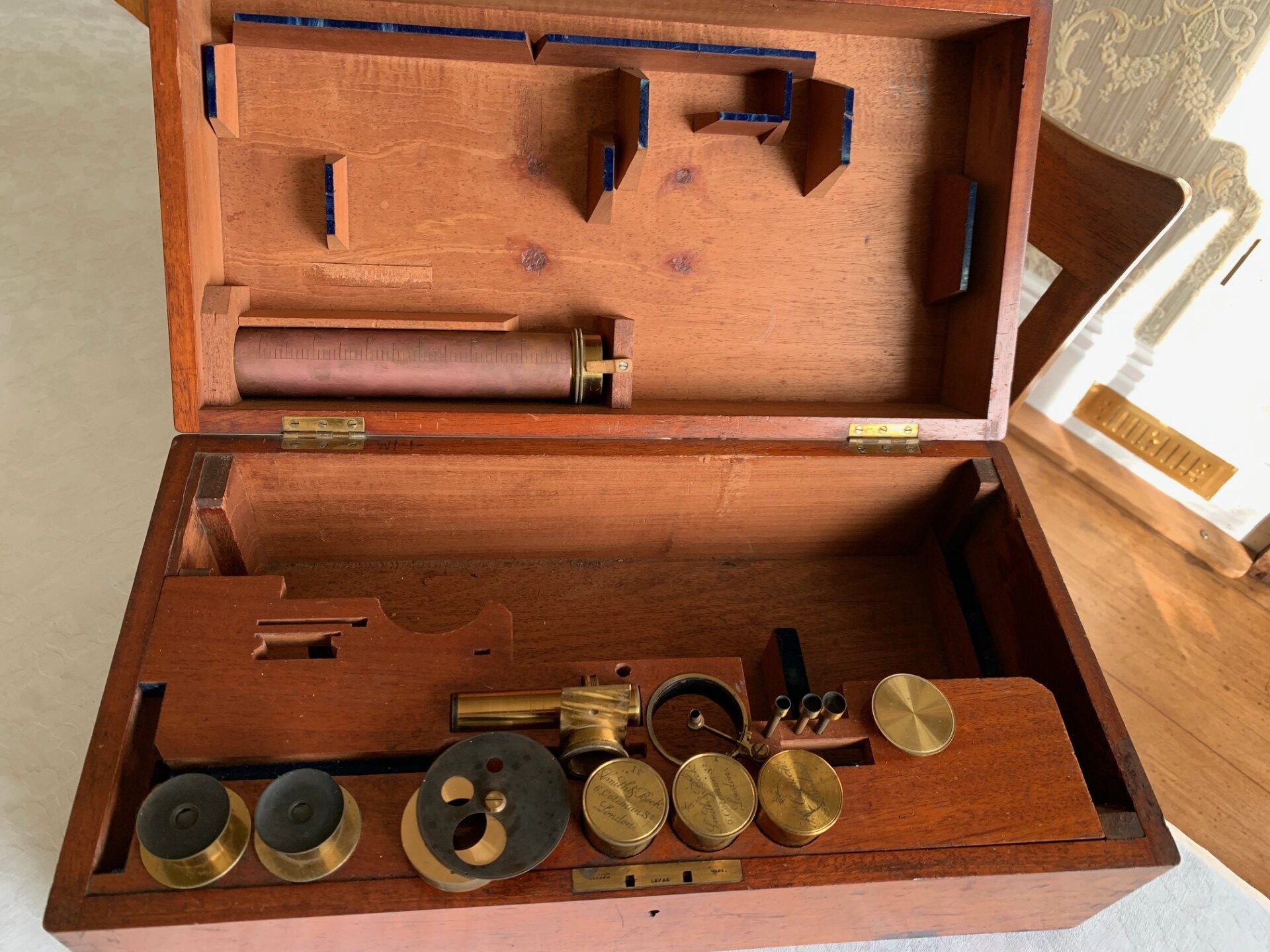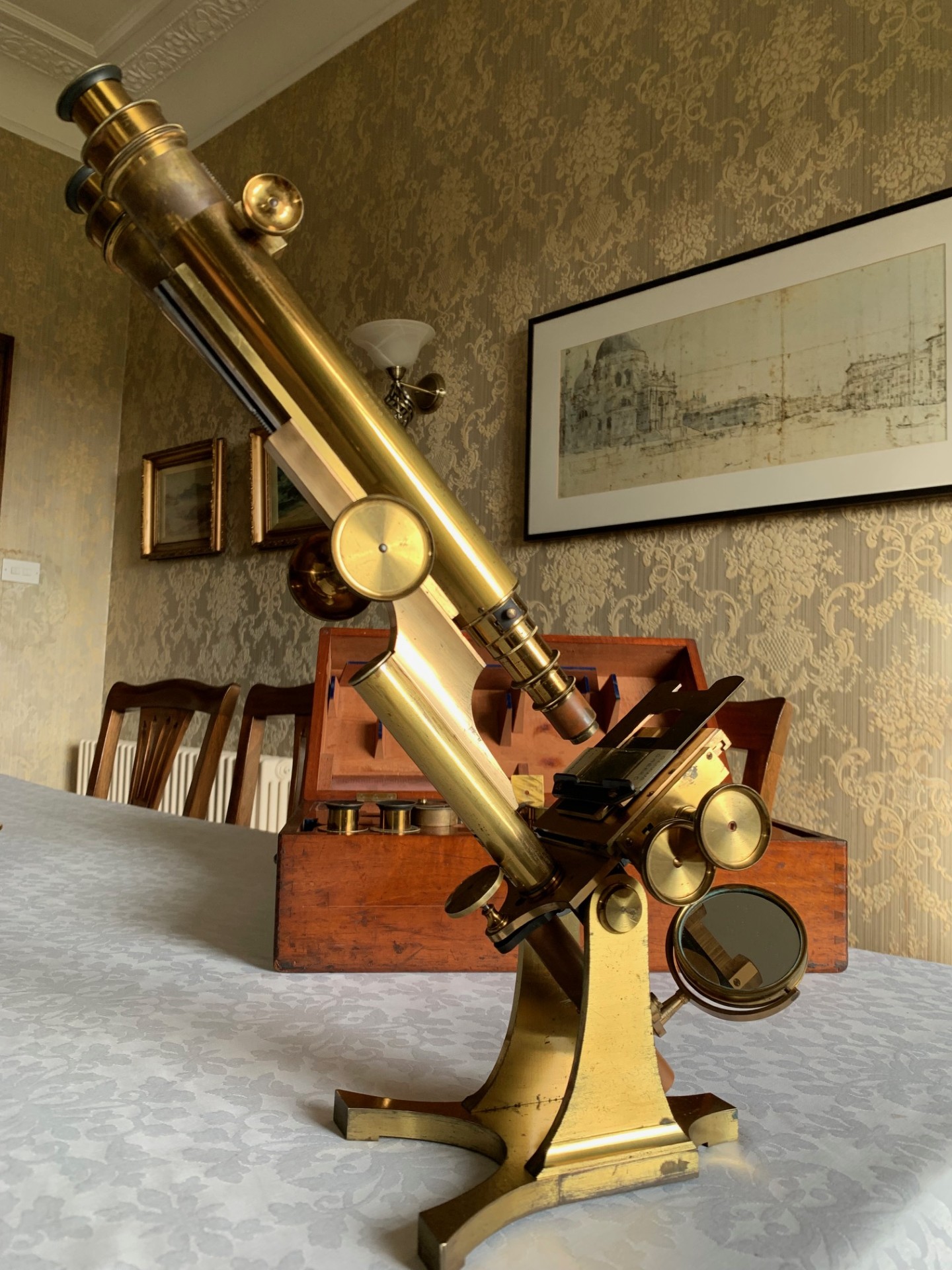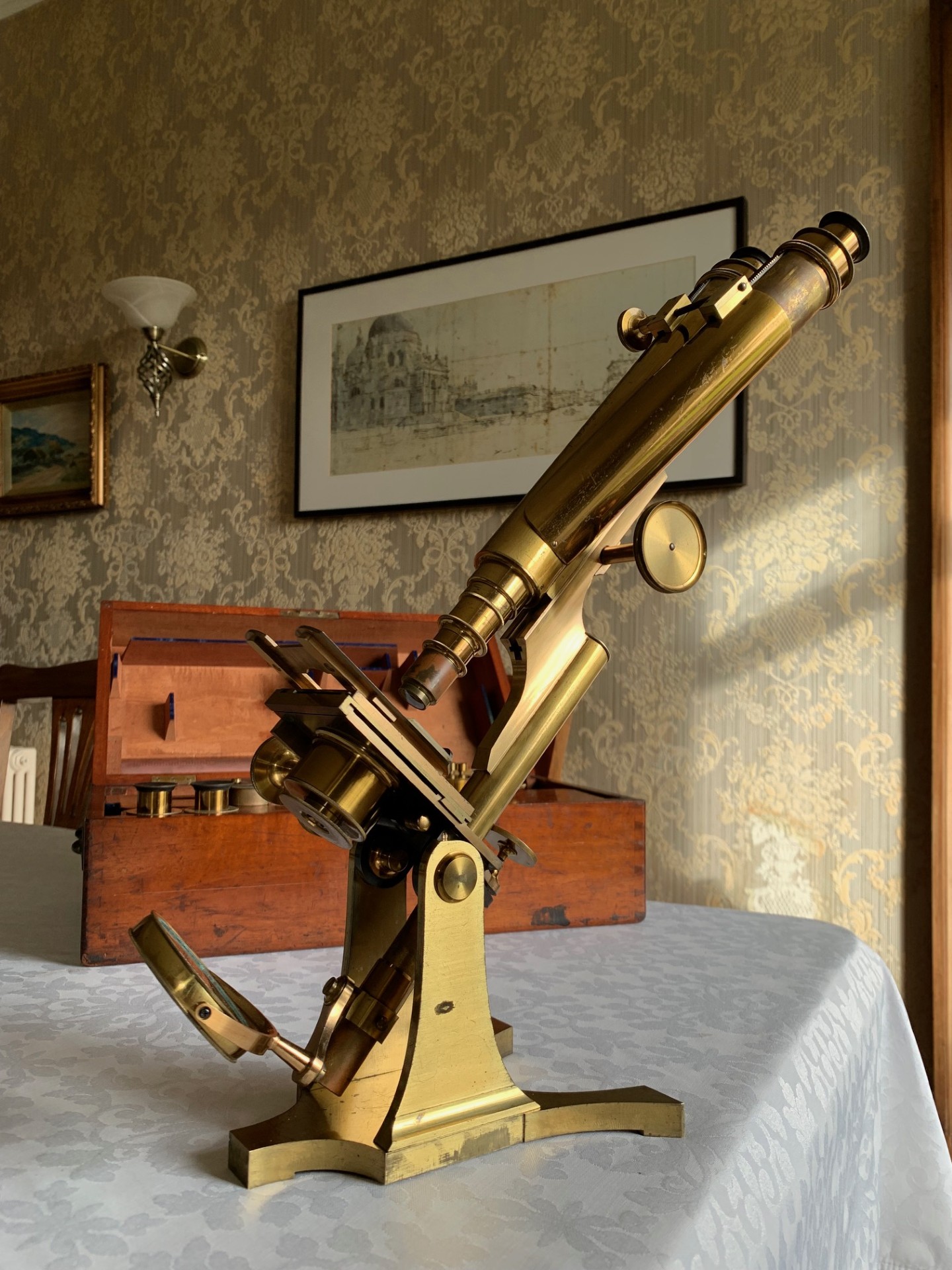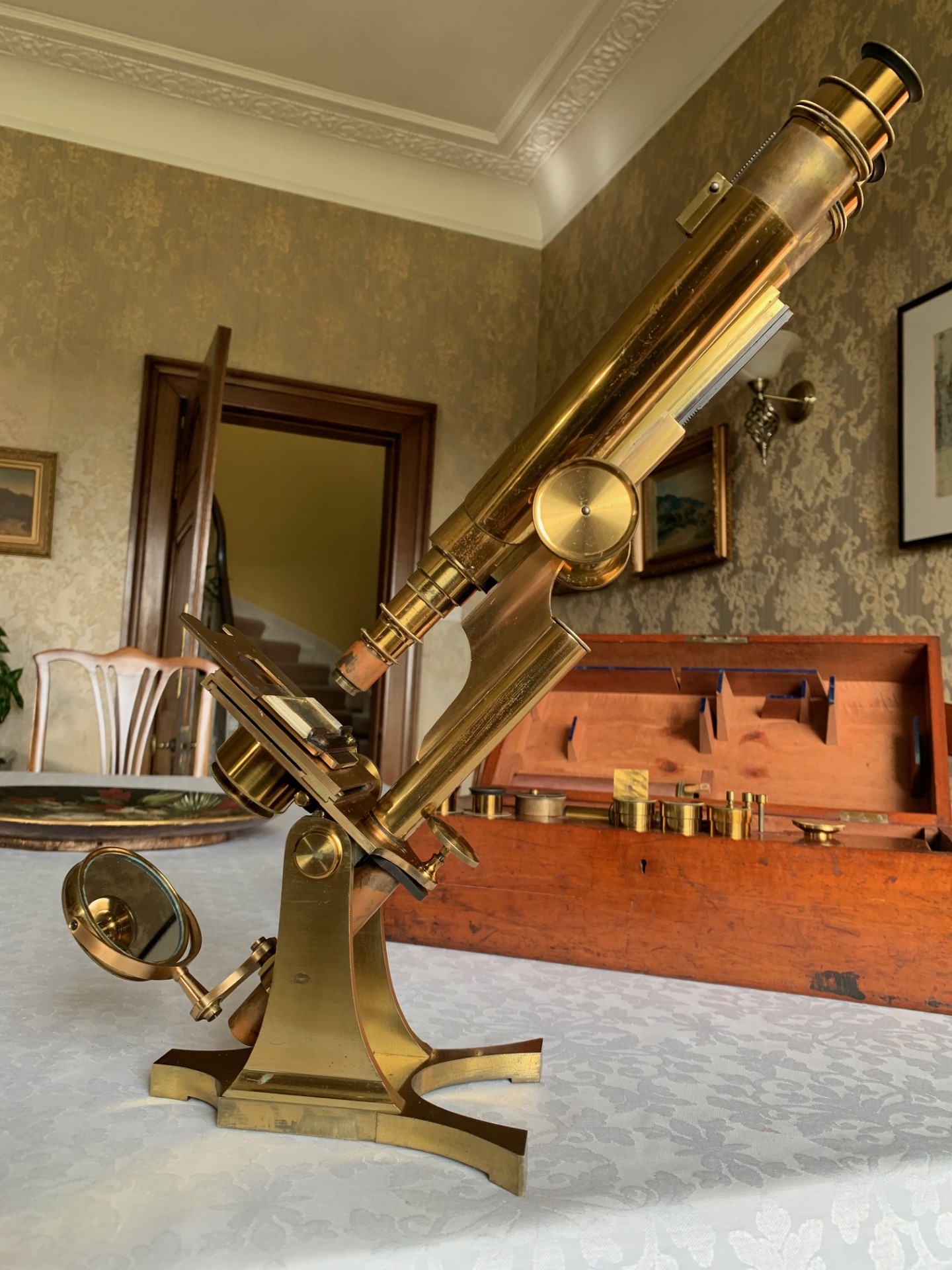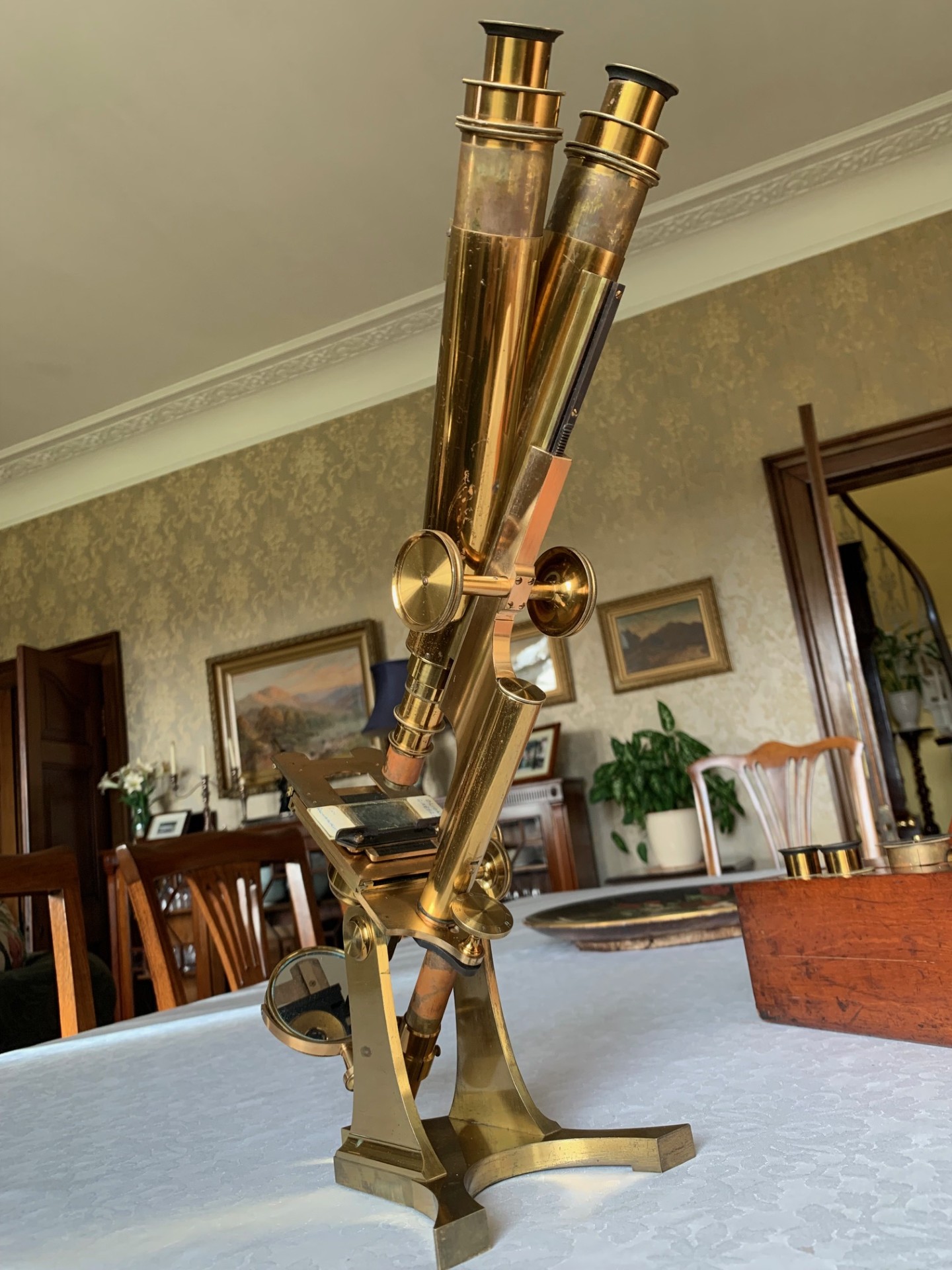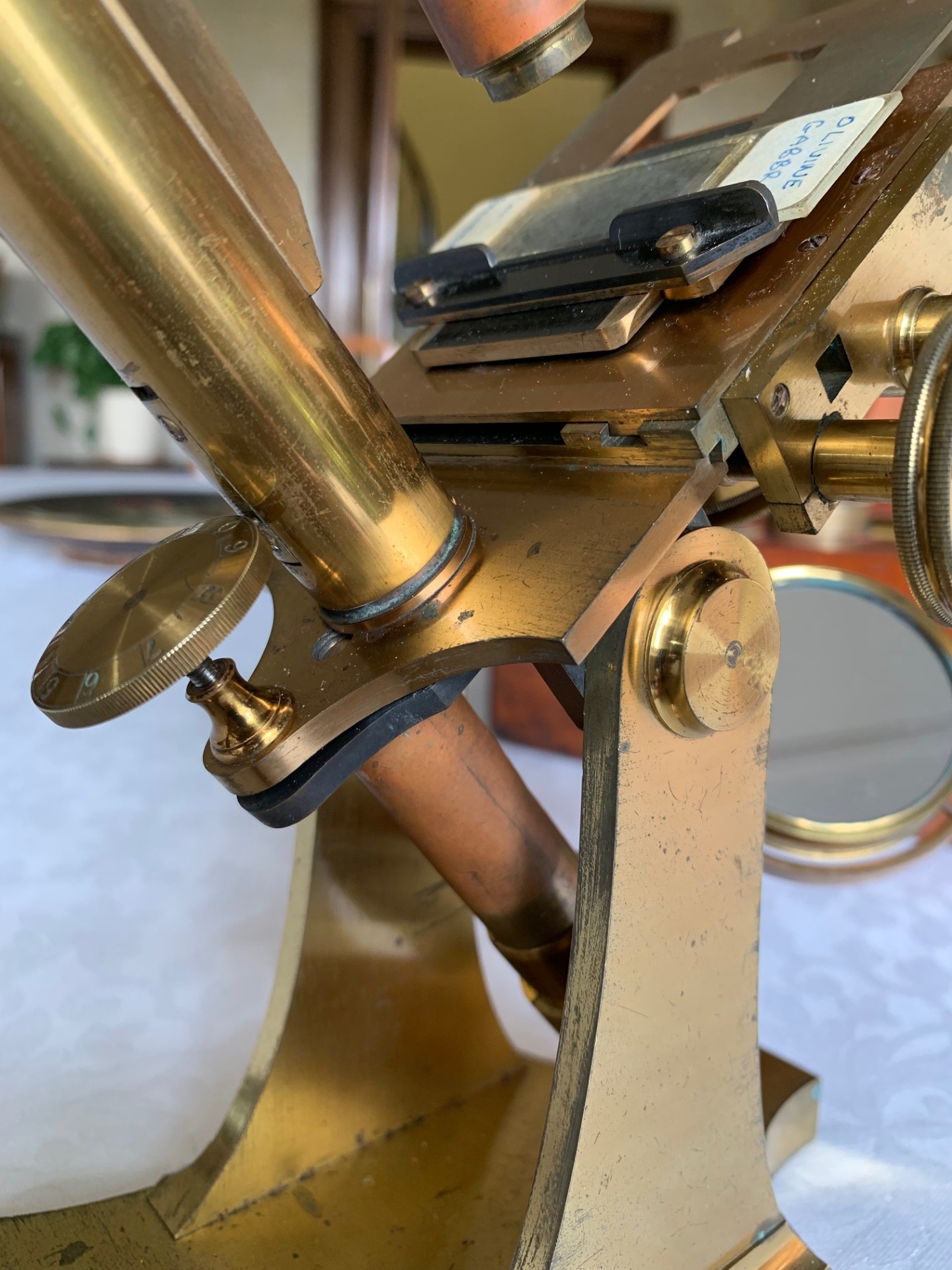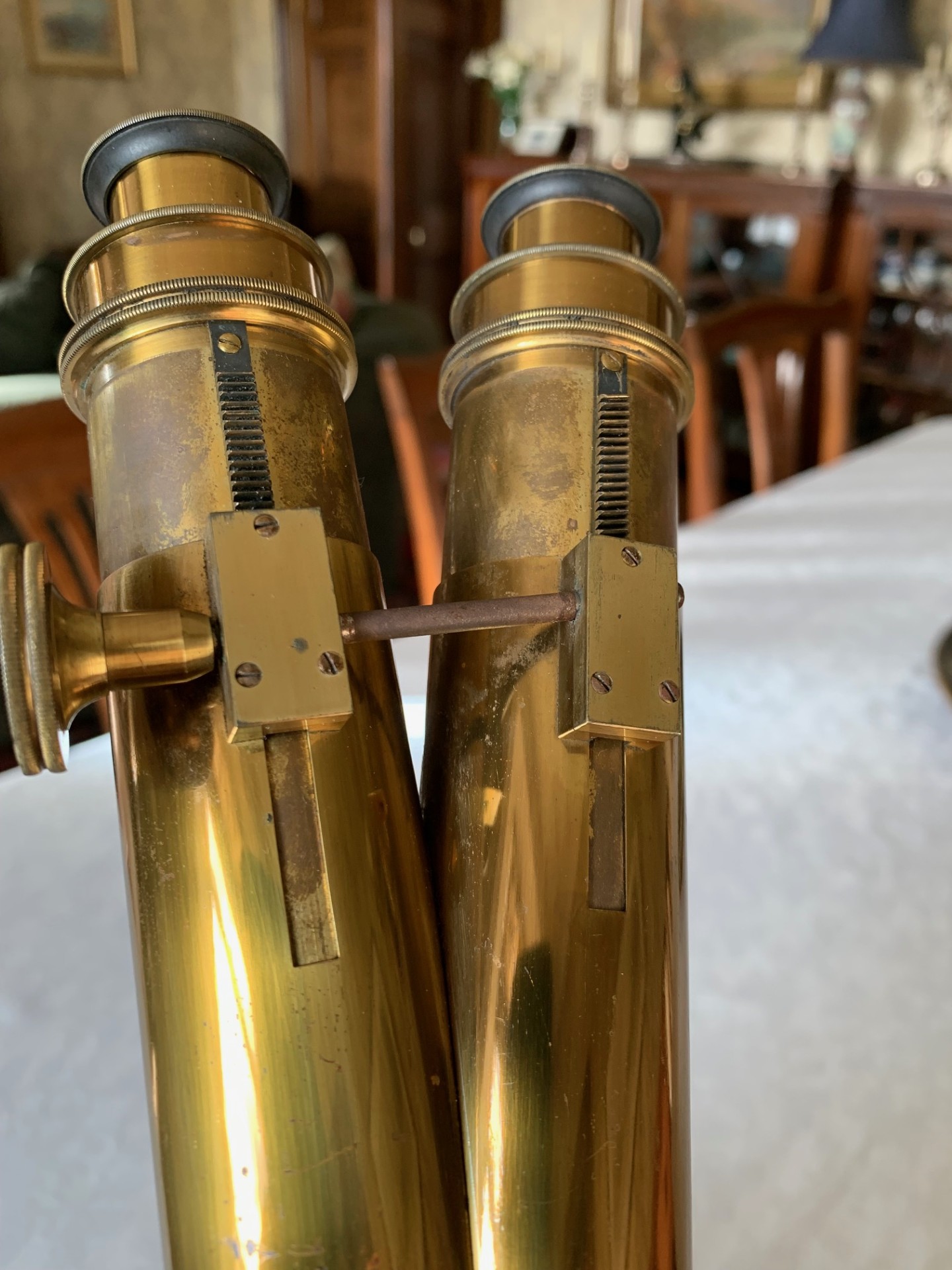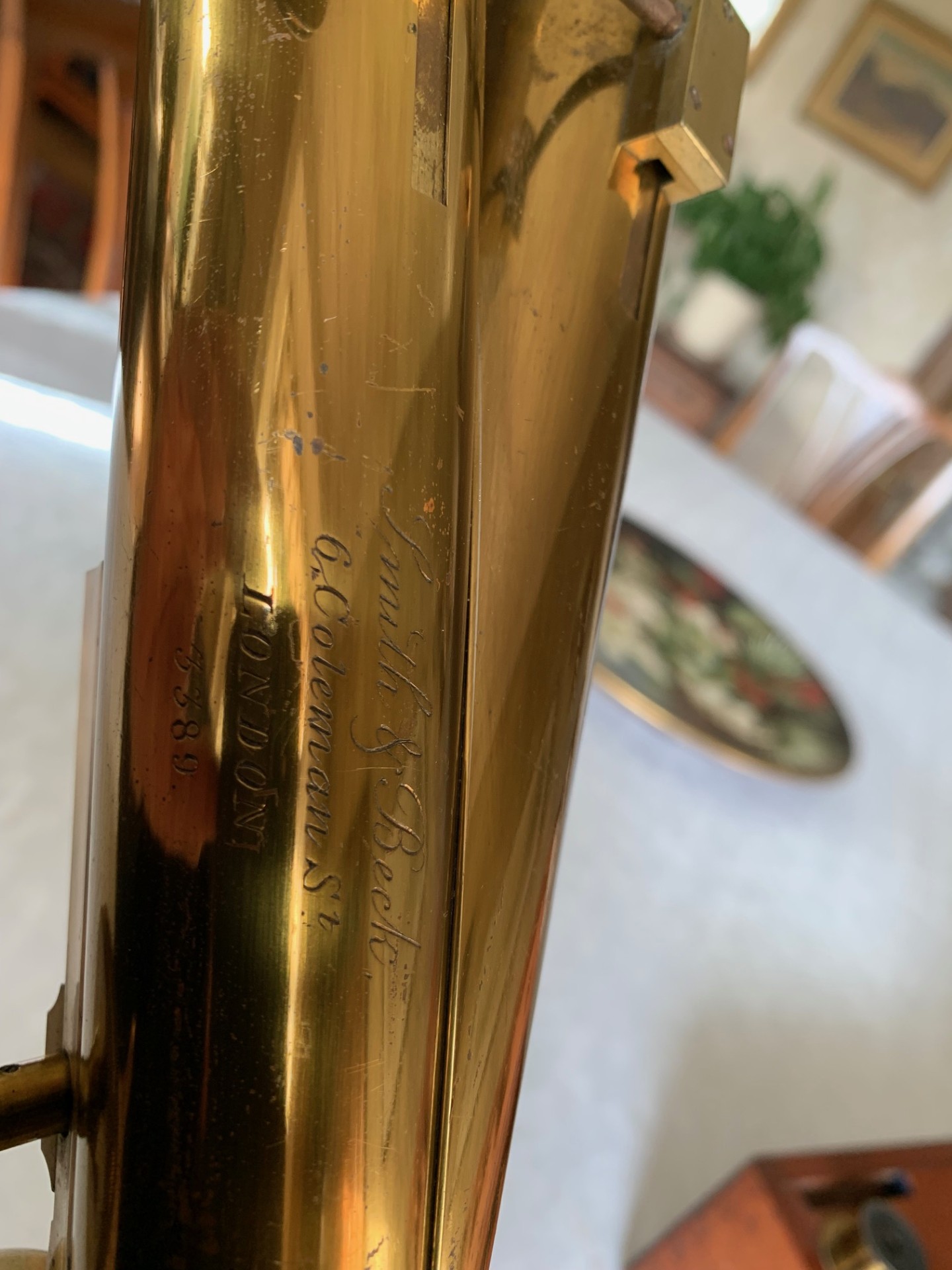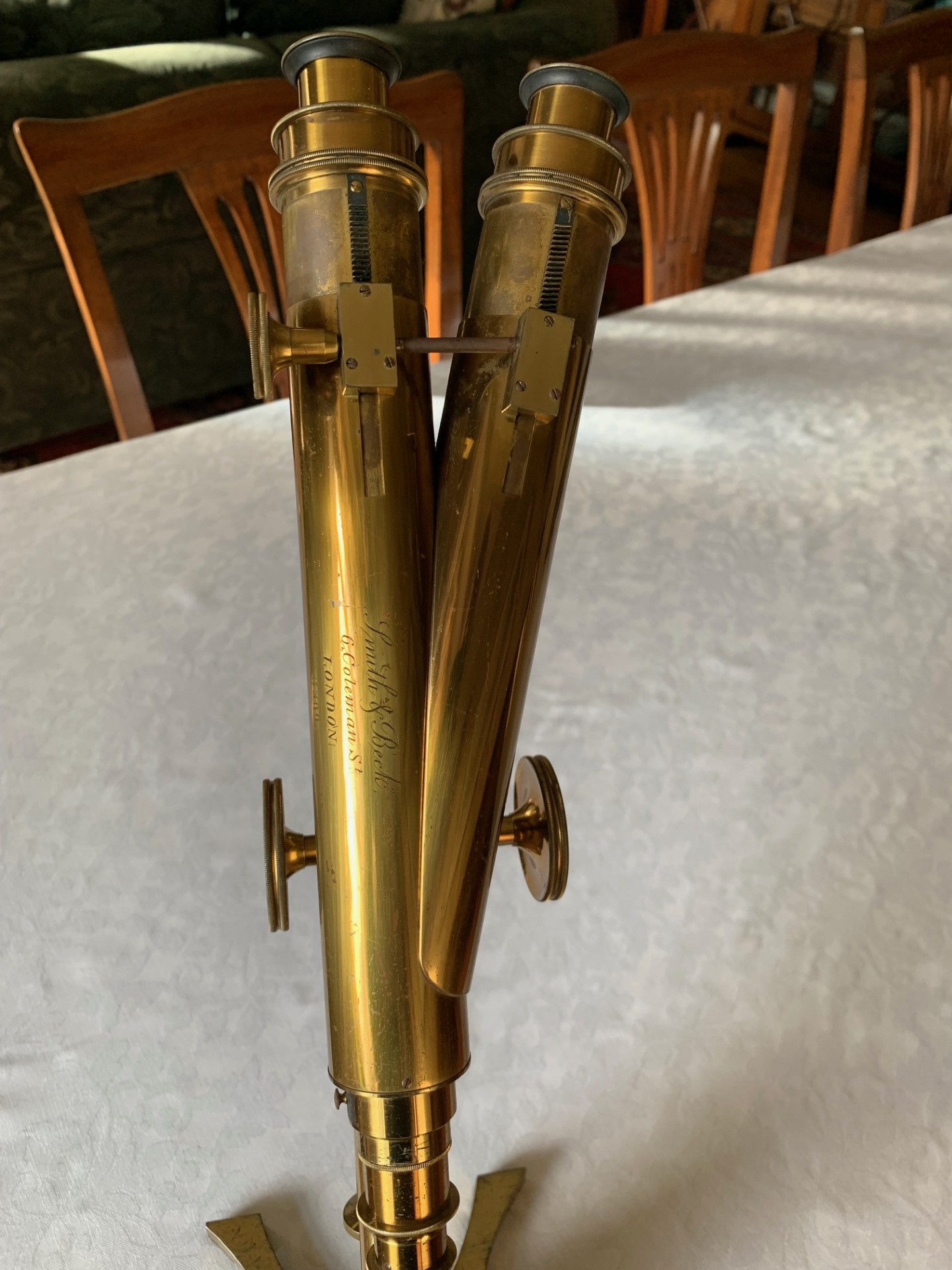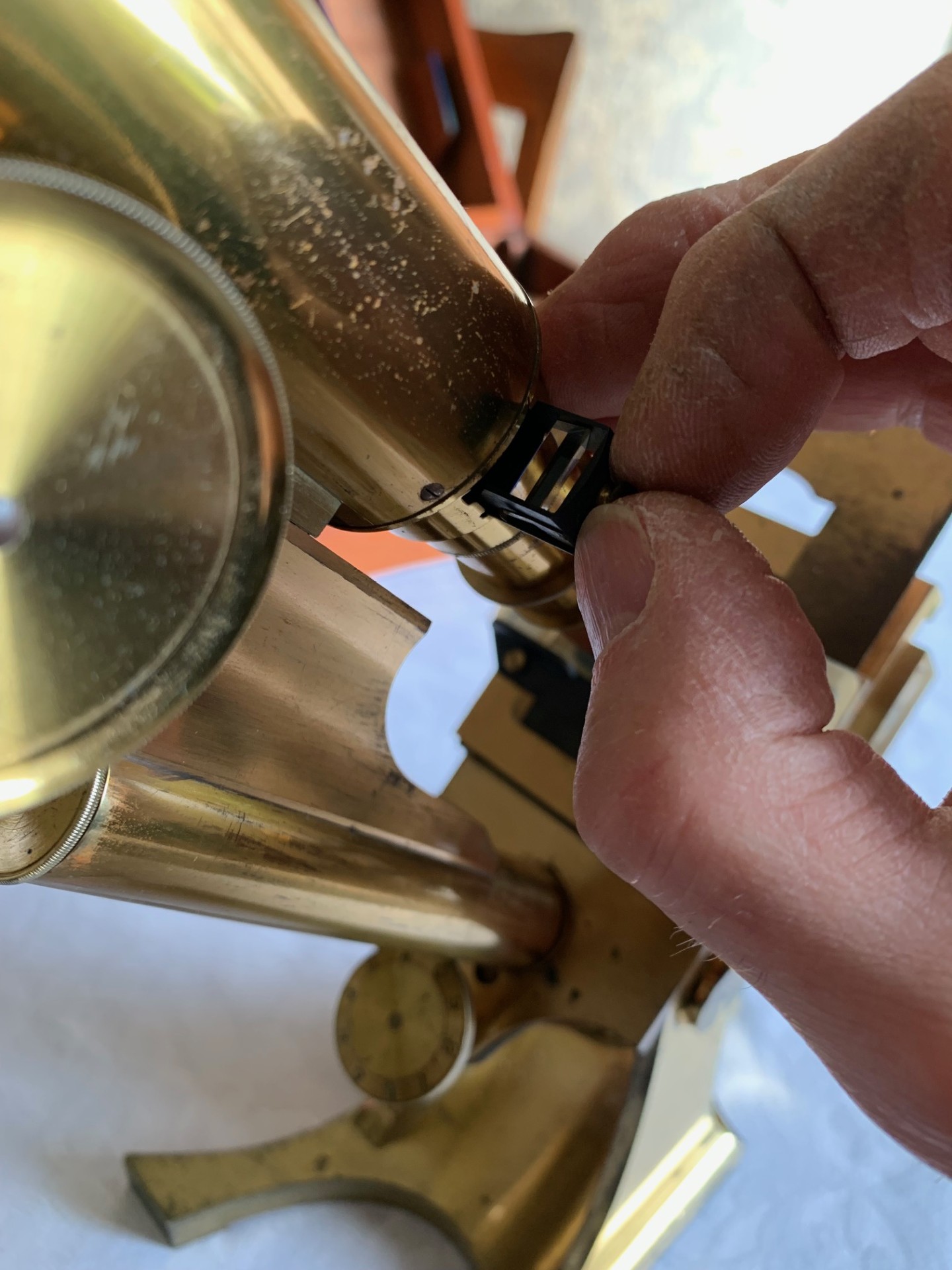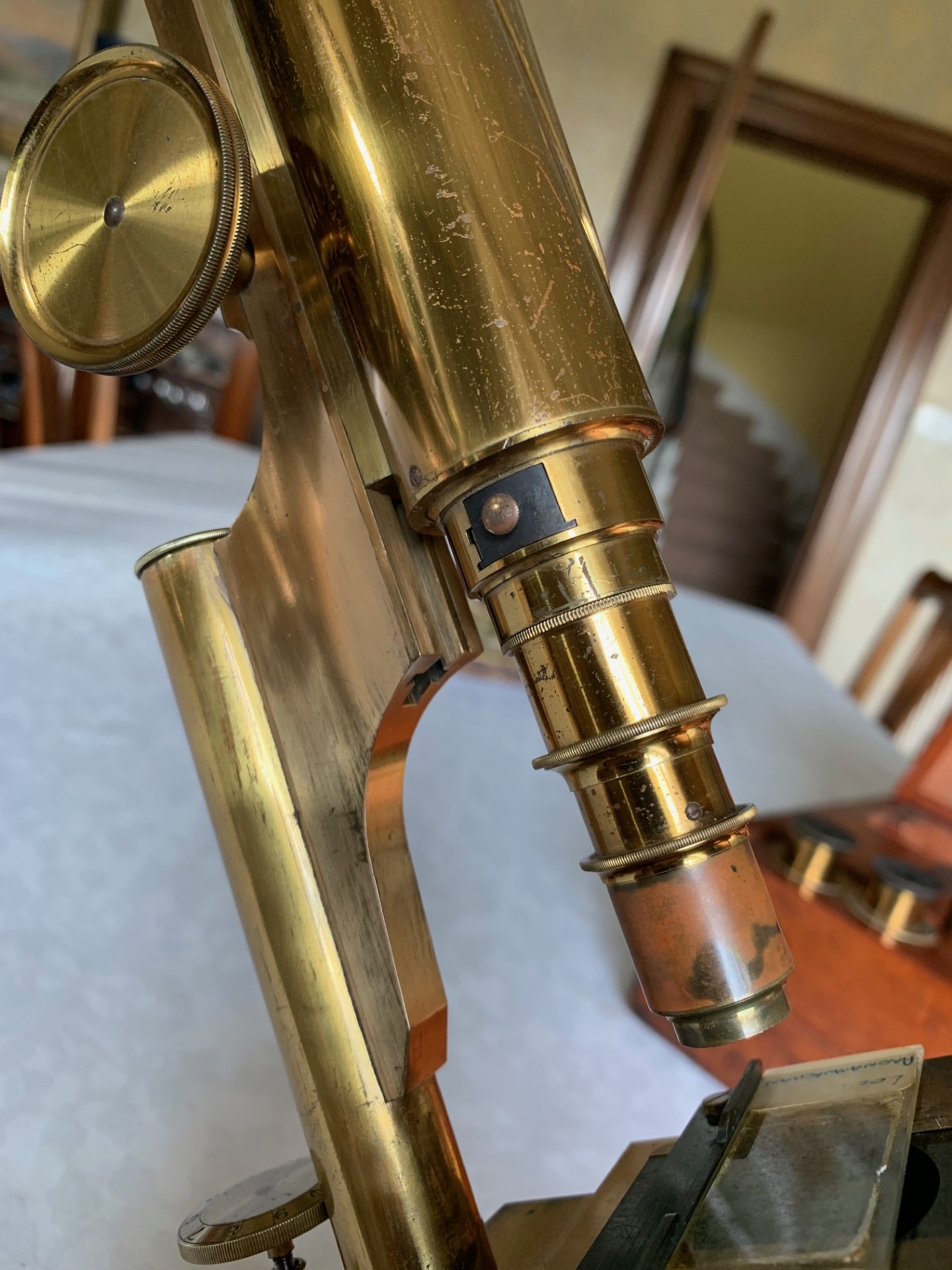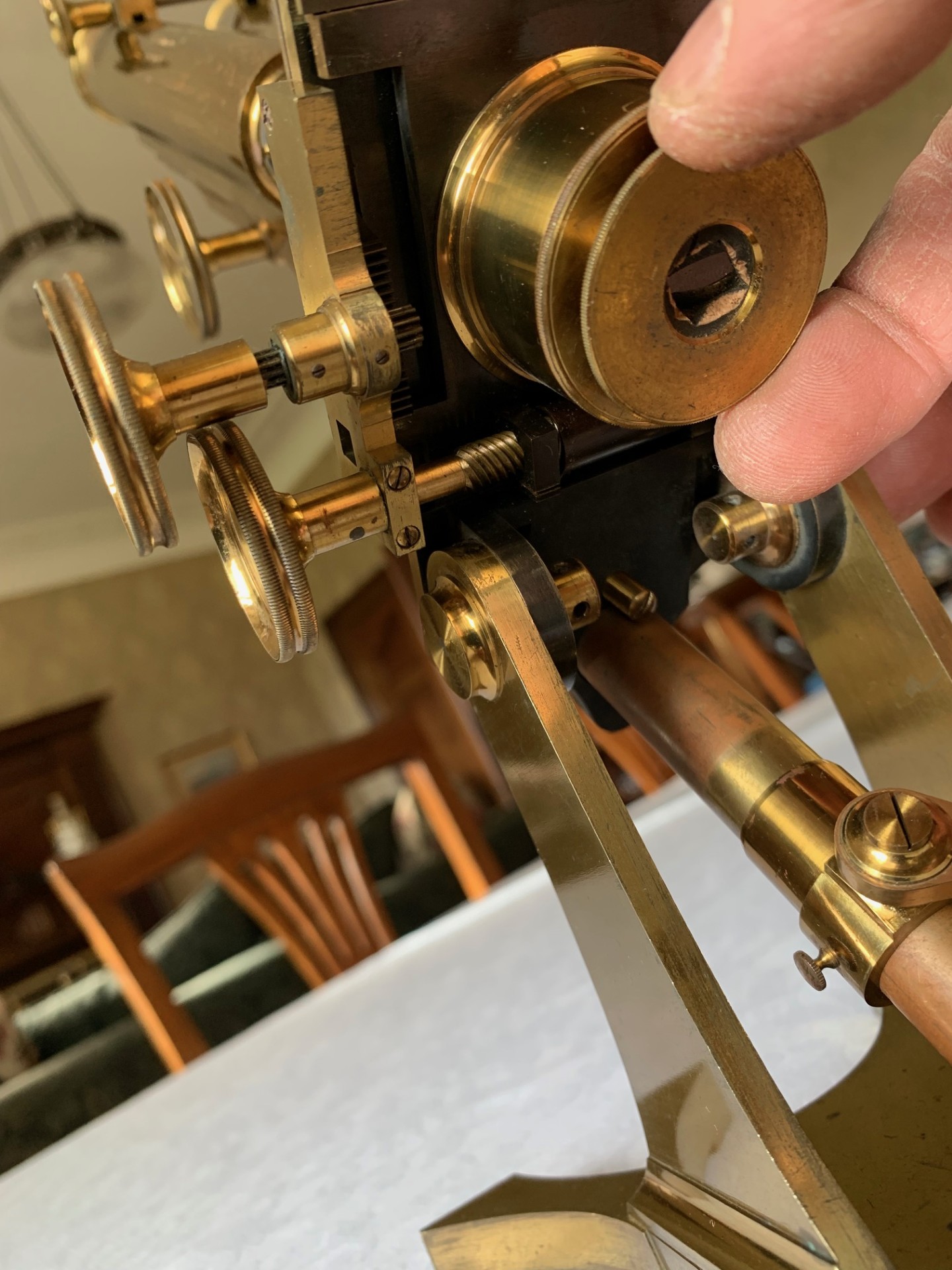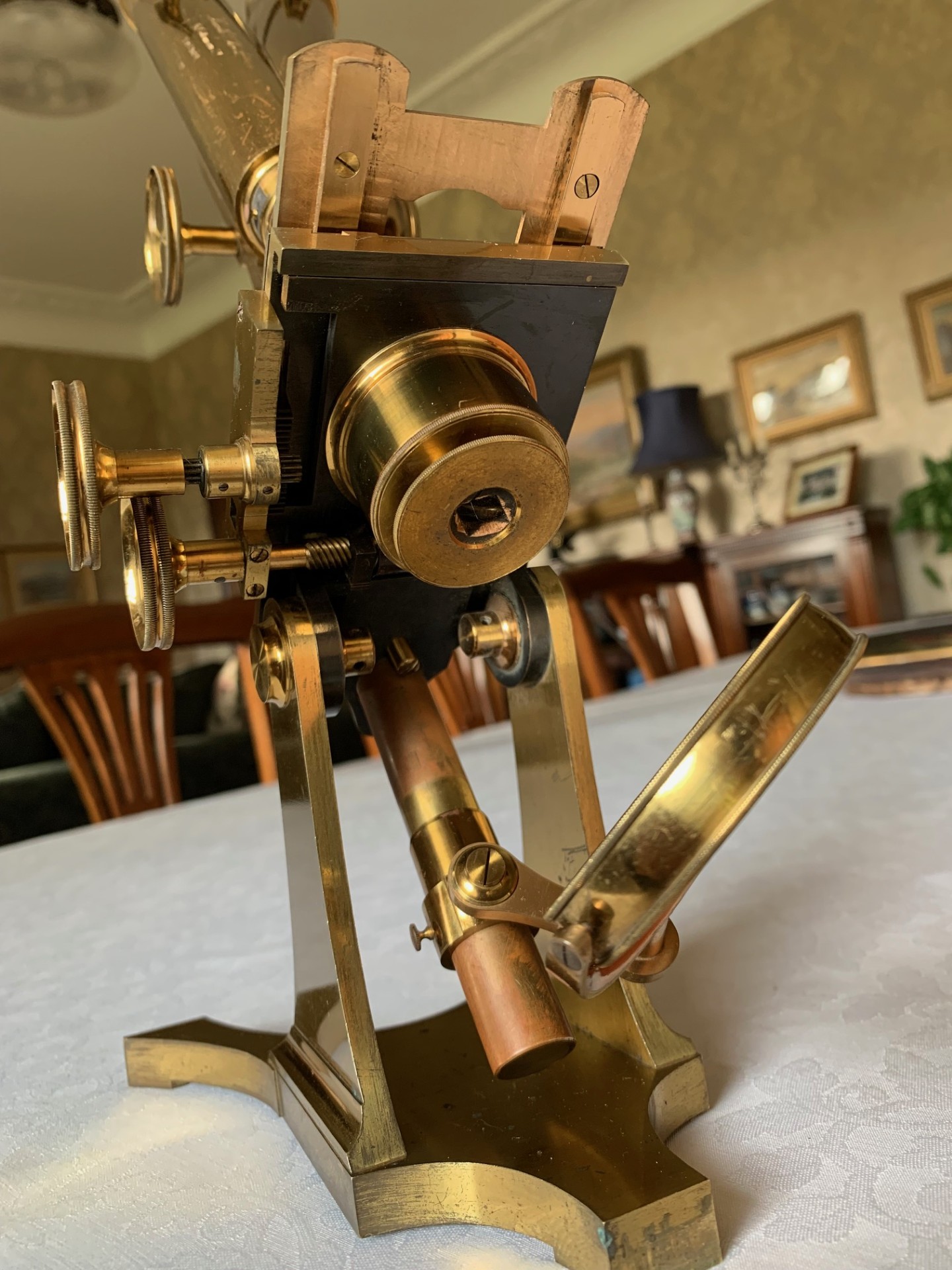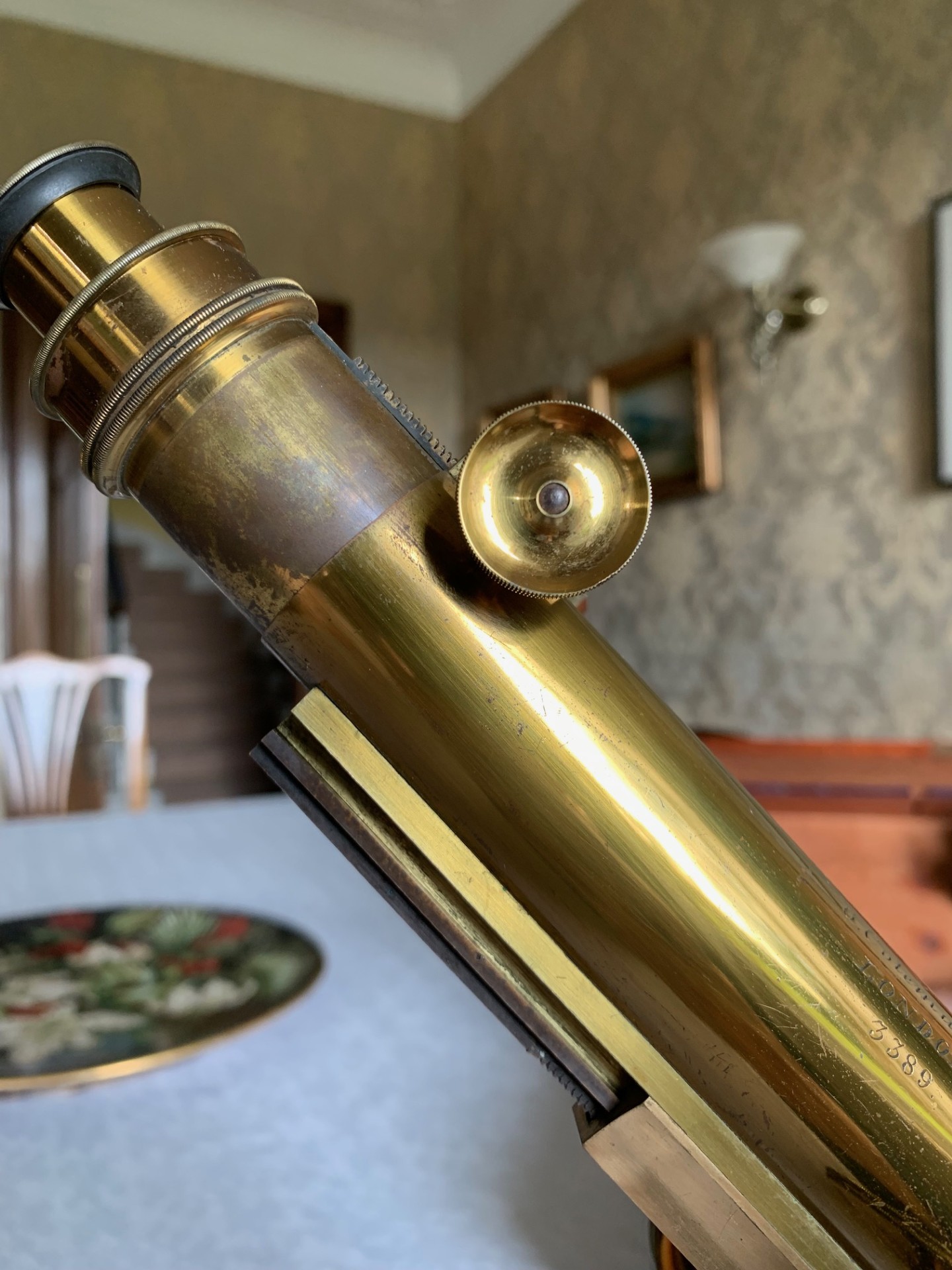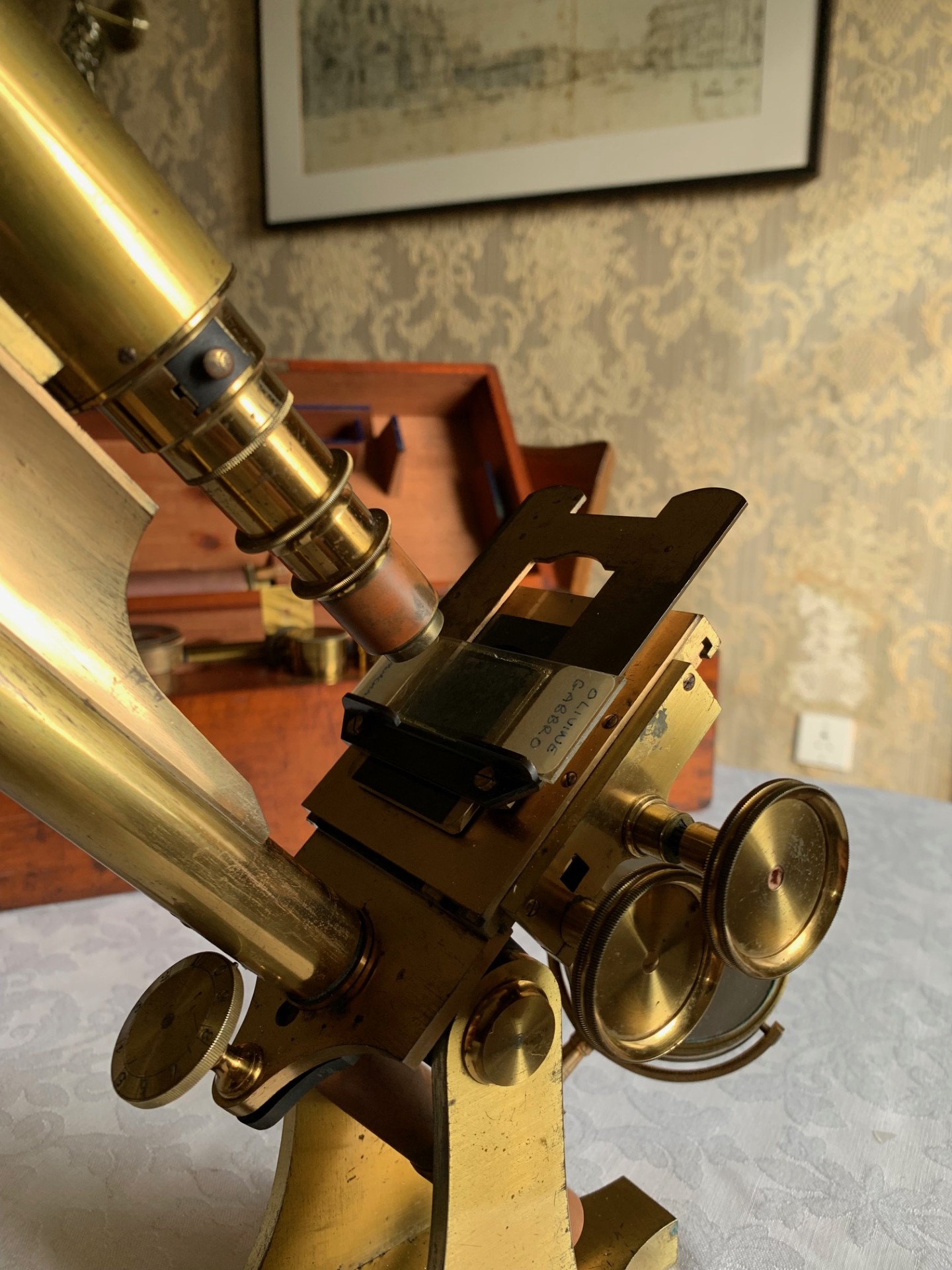SOLD – Antique Smith & Beck Student Model Wenham Binocular Microscope – c1864, Cased
Sold
Antique and generally extremely good condition Wenham binocular instrument manufactured by scientific instrument makers Smith & Beck of 6 Coleman Street, London dating to 1864 and carrying serial number 3389.
Circa
1864
Maker
Smith & Beck, London
Country of manufacture
UK and Ireland
Description
Background to Smith & Beck:
The firm Smith & Beck was originally established in London, by Richard Beck (1827 – 1866) in association with James Smith (1800 – 1873), and later to be joined by his brother Joseph Beck. Richard and Joseph Beck were nephews of Joseph Jackson Lister, who was a respected British optician and physicist who experimented with achromatic lenses and perfected them for use in optical microscopes. In commissioning the manufacture of his improved microscope, Lister worked with James Smith, an employee of the instrument-making firm of William Tulley, to create the stand. James Smith went on to establish his own optical instruments workshop in 1837. Through this relationship, Lister arranged for his nephew, Richard Beck to be an apprentice under Smith in 1843. In 1847, James Smith entered into partnership with Richard Beck, and the company was therefore re-named Smith & Beck. Some years later the company was renamed again as Smith, Beck and Beck, when Richard Beck’s brother Joseph Beck joined the company. James Smith retired in 1865 and the company then became R & J Beck and this name lasted until well into the latter part of the twentieth century.
Turning to the technical details, the instrument stands on a heavy brass reverse Y-shaped foot with twin uprights leading to the main pivot joint, which can be adjusted for tension if required. There’s a single pillar limb with attached lister-type upper limb giving a good range of coarse focus travel, which should allow low power objectives of up to around 3 inches to be used. The instrument tilts for inclined viewing and holds in position throughout the usable range of inclination. Coarse focus is via the older-style straight-cut rack and pinion, with smooth action and good rack with no missing teeth and the main Wenham tubes holding in position as they should on adjustment. Fine focus is controlled via a separate brass thumb-wheel at the rear of the limb, acting on a lever, which operates against sprung resistance moving the whole upper limb and optical assembly, so carrying quite a lot of weight.
With its optics, this instrument is in binocular configuration with mechanically extendable eyepiece draw-tubes operated by a rack and pinion system. Extending the draw-tube will increase magnification – you also have to re-focus. There’s the Wenham prism located just above the objective lens. This small glass prism is reasonably clean and when correctly positioned splits the image to create the binocular effect. It sits in a shoe-carrier as shown in the listing photos and gives a good bright collimated image to both tubes. There’s two pairs of top-hat eyepieces supplied with the instrument, as under:
– approx 6x magnification unbranded – probably by Smith & Beck
– approx 10x magnification unbranded – probably by Smith & Beck
There are also appropriate objective lenses in brass, as under – note the instrument appears to be RMS in terms of thread diameter, so plenty of other objectives should also fit:
– 3/2 inch – 4x magnification by Smith & Beck
– 2/3rds inch – 10x magnification by Smith & J Beck
– 1/10th inch – approx 80x magnification by Henry Crouch
( all objectives have correct brass canisters)
The magnification range available is therefore around 24x to 800x.
The fully mechanical rectangular brass stage is attached to the limb tail-piece at the pivot point and is a well engineered feature that’s a delight to use, with nice smooth action to its moving parts. It’s got twin thumb-wheel x/y adjusters on the right-hand side of the stage. It’s also fitted with a top plate that can rotate through a full 360 degrees, slide on dovetails independently of the mechanical controls and can also be taken off for cleaning as necessary. The top-plate also has an integral specimen holder/ledge for holding slides steady during inclined viewing and when the axes are being moved around which works well. The x/y controls have a nice solid feel, offering good accurate control of specimen positioning, which is a real advantage for detailed and high magnification work.
Turning to the sub-stage, we have a 39mm diameter brass mount to which will friction-fit accessories such as the supplied wheel-of-stops with 3 positions and fairly smooth rotation and a sub-stage polariser – the latter is shown fitted in the listing photos.
Lighting is via a plano-concave mirror in a brass carrier on a height and swing adjustable brass support arm and gimbal, with period silvering that’s in age-appropriate condition to both sides with some minor losses at the margins, but still perfectly functional.
Accessories:
– wheel-of-stops – 3 positions
– nicol prism rotatable polariser and RMS analyser – achieve extinction when crossed
(see photo showing an image of thin-section mineral Olivine Gabbro under polarised light)
– live box – this will need a new glass coverslip
– lieberkhun (good condition but doesn’t fit any of the supplied objectives)
– monocular tube with graduations for high-power use in monocular configuration
– erector lens – can be used to right the image when in monocular mode – screws into end of monocular tube
– plug-in dark-well carrier with three sizes of specimen holder
The instrument and its controls have been very gently dusted, lightly lubricated and operate smoothly with age-appropriate signs of wear as one would expect for a quality instrument of this quality and age. With its bright lacquered finishes and the signature Wenham double tubes, it’ll make a great display piece in the right setting and is also quite a usable instrument. It presents really well and I’m certain it will look the part in a library or home office, especially when set up with an appropriate antique slide. There’s also the correct period case for the instrument and its accessories with good exterior sheen, fitted interior that can accommodate most of the accessories. The lock is present, but key absent and one of the carry-handles is also missing. Overall though, a quality case befitting the quality instrument that resides within.
Owing to the weight and delicacy of this antique microscope, it will be partially dismantled, carefully wrapped for shipping and dispatched by insured courier upon receipt of cleared funds.
Thanks for looking.
Ask the Dealer
Dealer information
 Arcboutant Scientific
Arcboutant Scientific
Howard Nutton based in Glasgow Scotland with a background in Natural Science along with previous career in risk management. I obtained my first antique microscope in 1988 - it was a Watson Edinburgh model H serial number 23604 - dating it to 1918. Since that time I've owned and restored hundreds of similar instruments. As Arcboutant Scientific now also making available personally curated fine examples, principally of antique microscopes and associated scientific equipment by quality English and Continental makers, to collectors world-wide.




